Banff Journal

GEOG 4350 - Parks & Protected Areas Planning & Management
Practical portion of this field course toom place in Banff from May 25 to June 6. We researched overcrowding in Lake Minnewanka but observed it all over Banff.
May 25 - Sunday
Having arrived to the campground we enjoyed our first fire together. Adjusting to the living conditions & observing neighbours who left their food out, fire on, & left with their car —their camp was raided by a concerned/angry Parks Canada employee on patrol. We also got our stove taken away the next evening because we left it out on the campsite table since we hadn't used it. Throughout the next 12 days it way interesting to see the way different families camped. The most intriguing one I saw was a family that brought a big screen and projector, so that they could sit by the fire & the kids could watch movies. The showers every night had to be timed right because of overcrowding in the evenings, but it worked out most nights by going to shower after the fire around 10pm to miss the crowds.
May 26 - Monday
Lake Minnewanka
We hiked to main crowding spots at Lake Minnewanka, & where we would be surveying the following days.
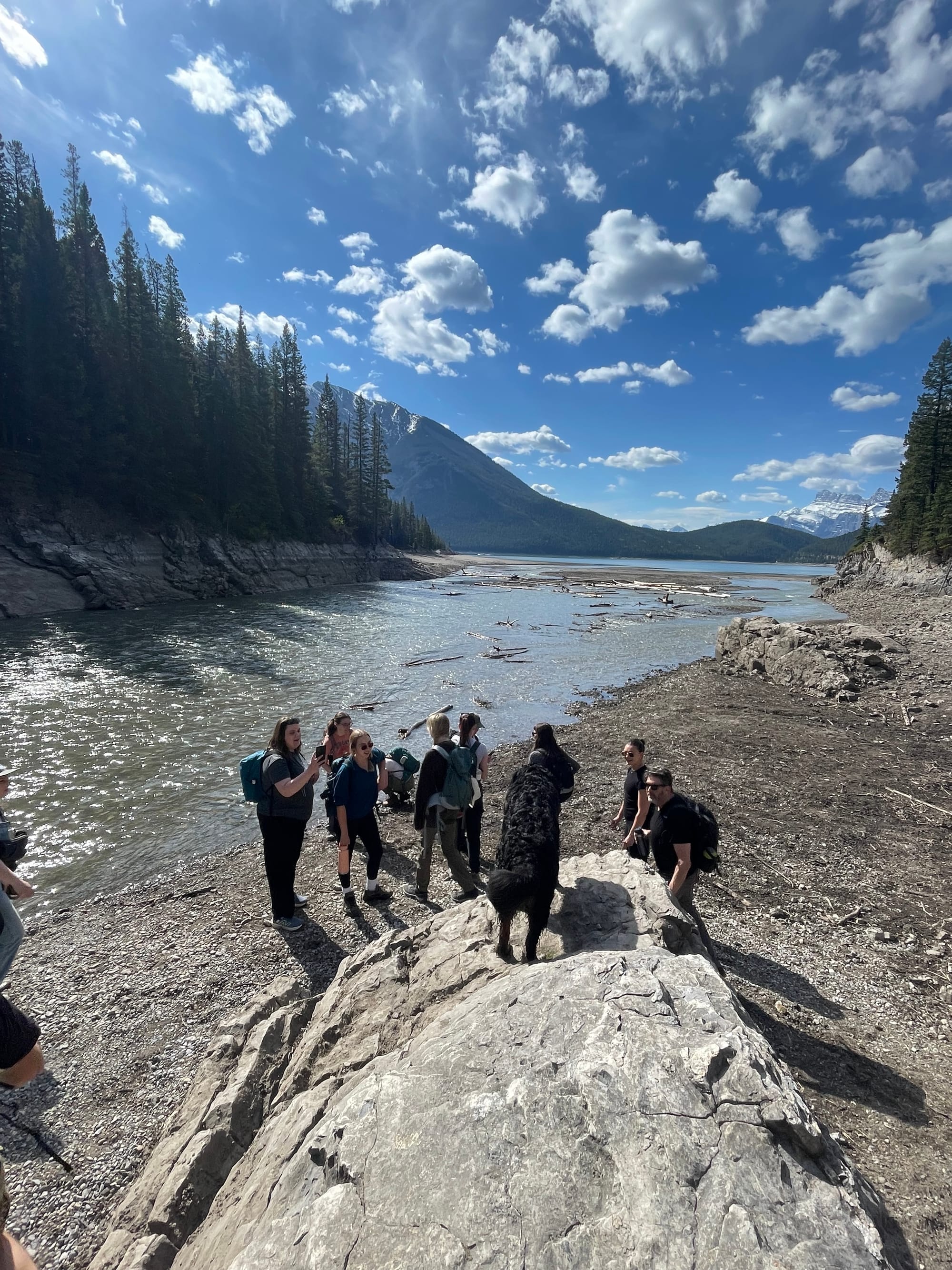
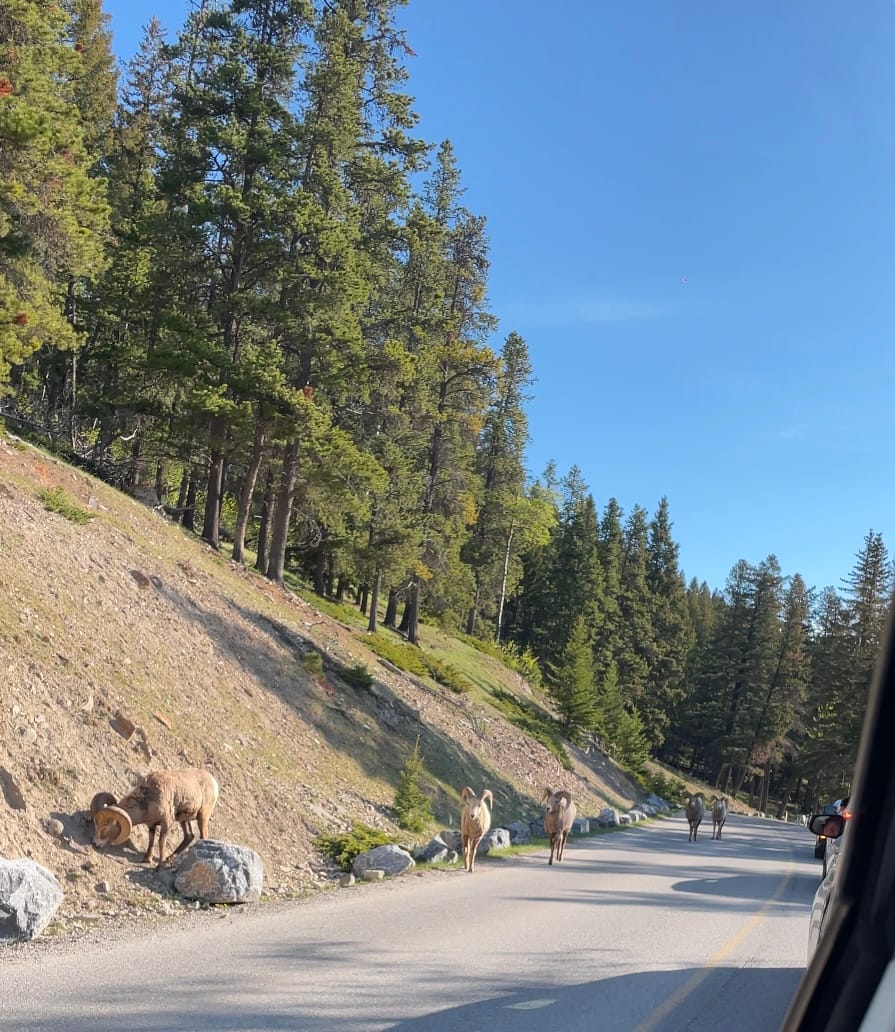
On our drive in there was a unsafe situation of other tourists stopping their car to take pictures of the sheep/deer at the side of the road. We had to wait for them to be done or try to overtake them on the 2 lane 2-way road. When it happened to us there wasn't much crowding on the road but if there was it would have been hard/risky to overtake 5 stopped cars over verses the 1 we had to overtake.
Old Dam - We went to the Old Dam a short walk from Lake Minnewanka, & found out trans delta owns it and that operated on the cascade river. The architecture of the Dam was interesting.
2 Jack Lake - We ate lunch here, it shows up right as you leave Lake Minnewanka. This is also where we saw people feeding geese, kids the size of geese, risking their fingers. It shows how these geese were habituated because the geese in Winnipeg would have certainly hissed and bit you.
Johnson Lake
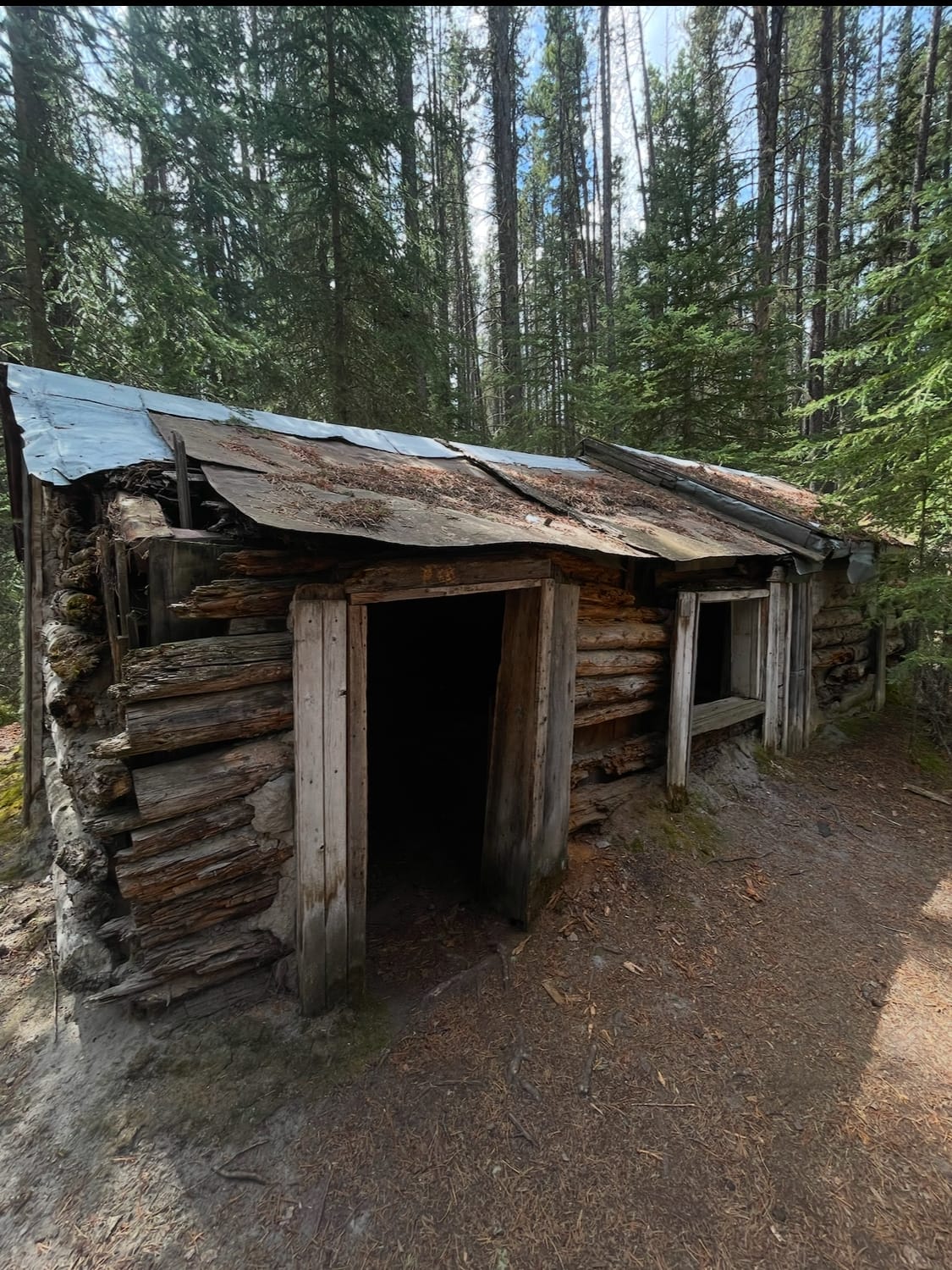
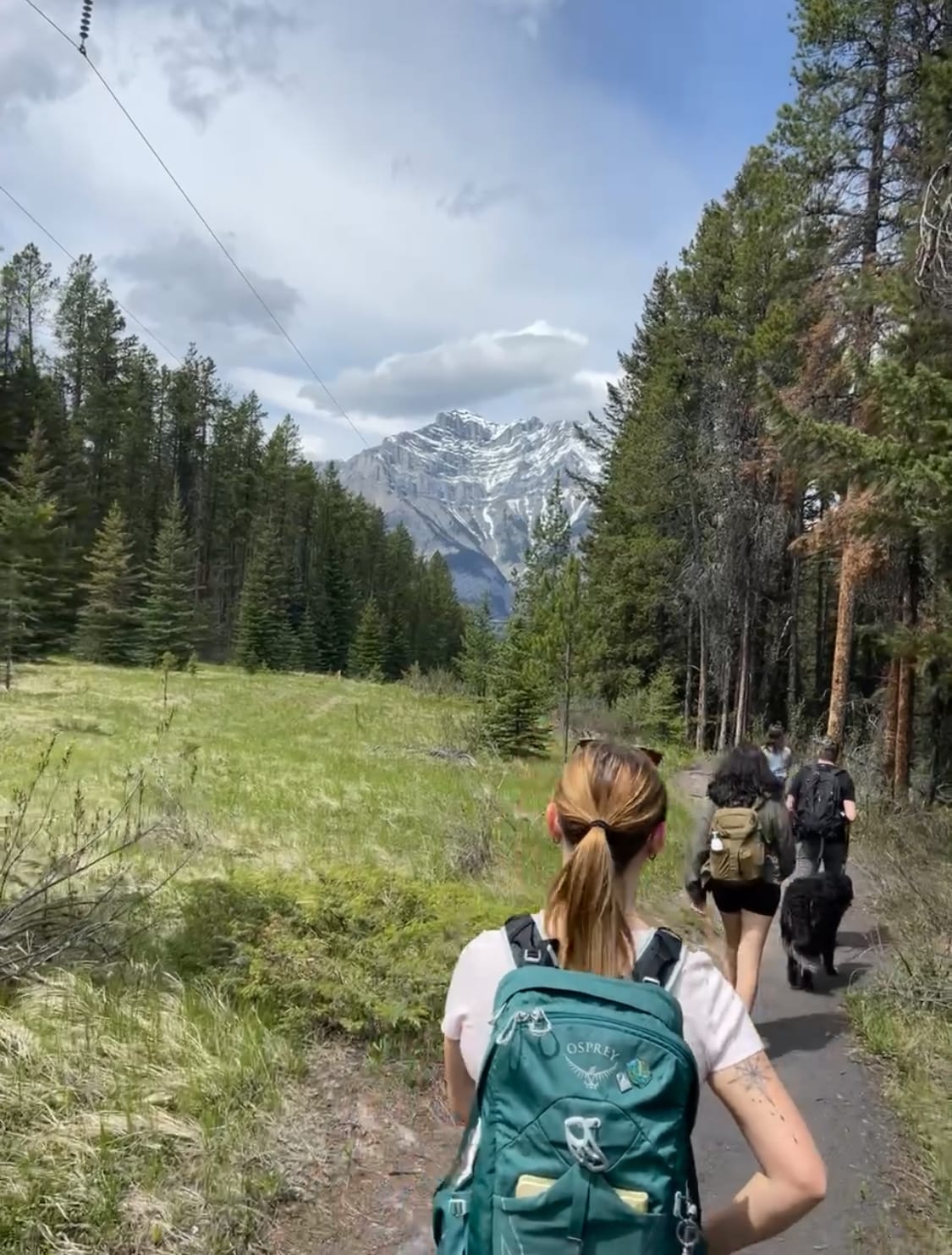
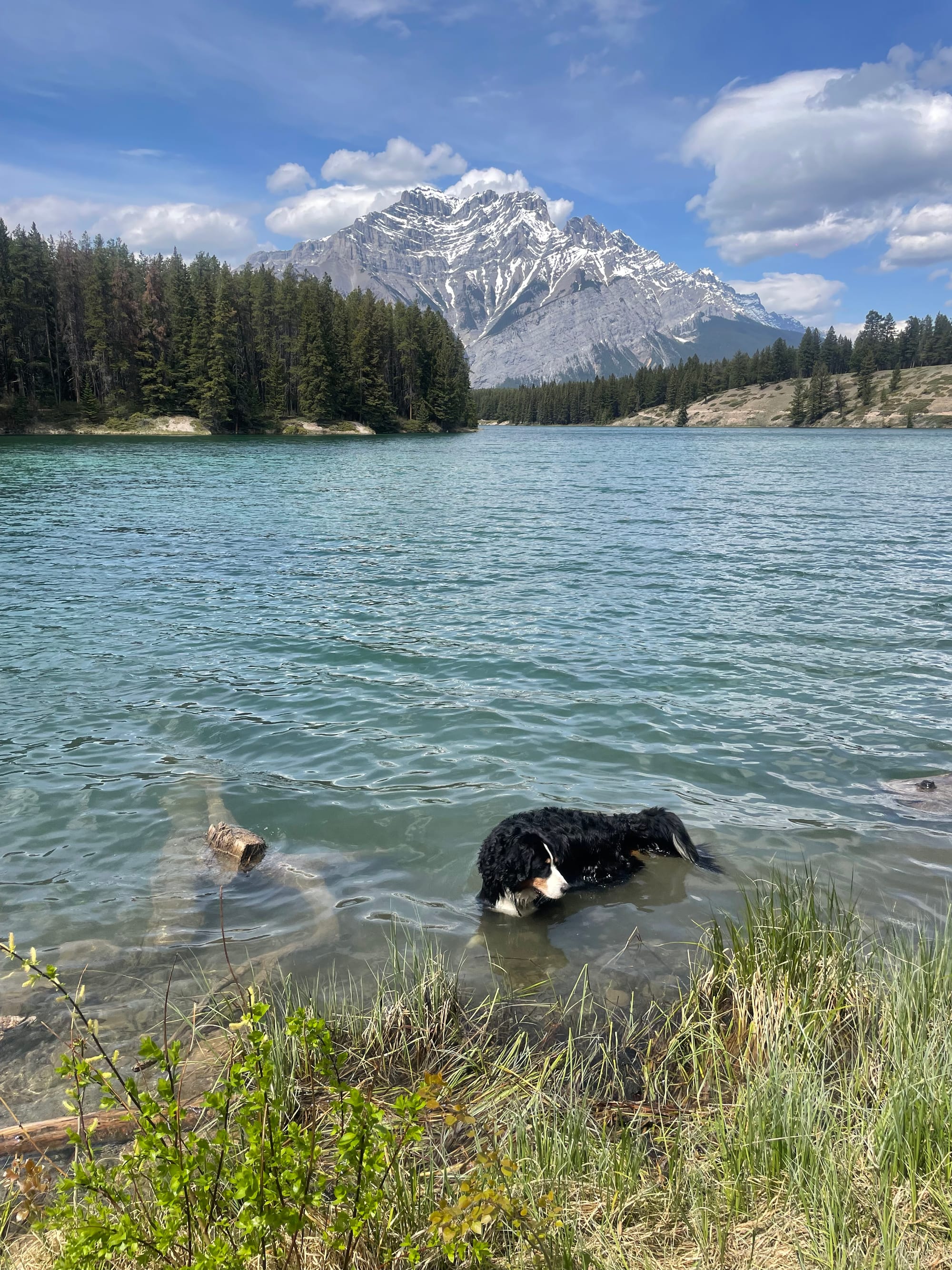
We hiked around this lake as a class & the crowding was minimal & spread out, as there were many picnic spots around the man made non-glacier fed lake.
Mount Norquay Lookout —Banff town viewpoint
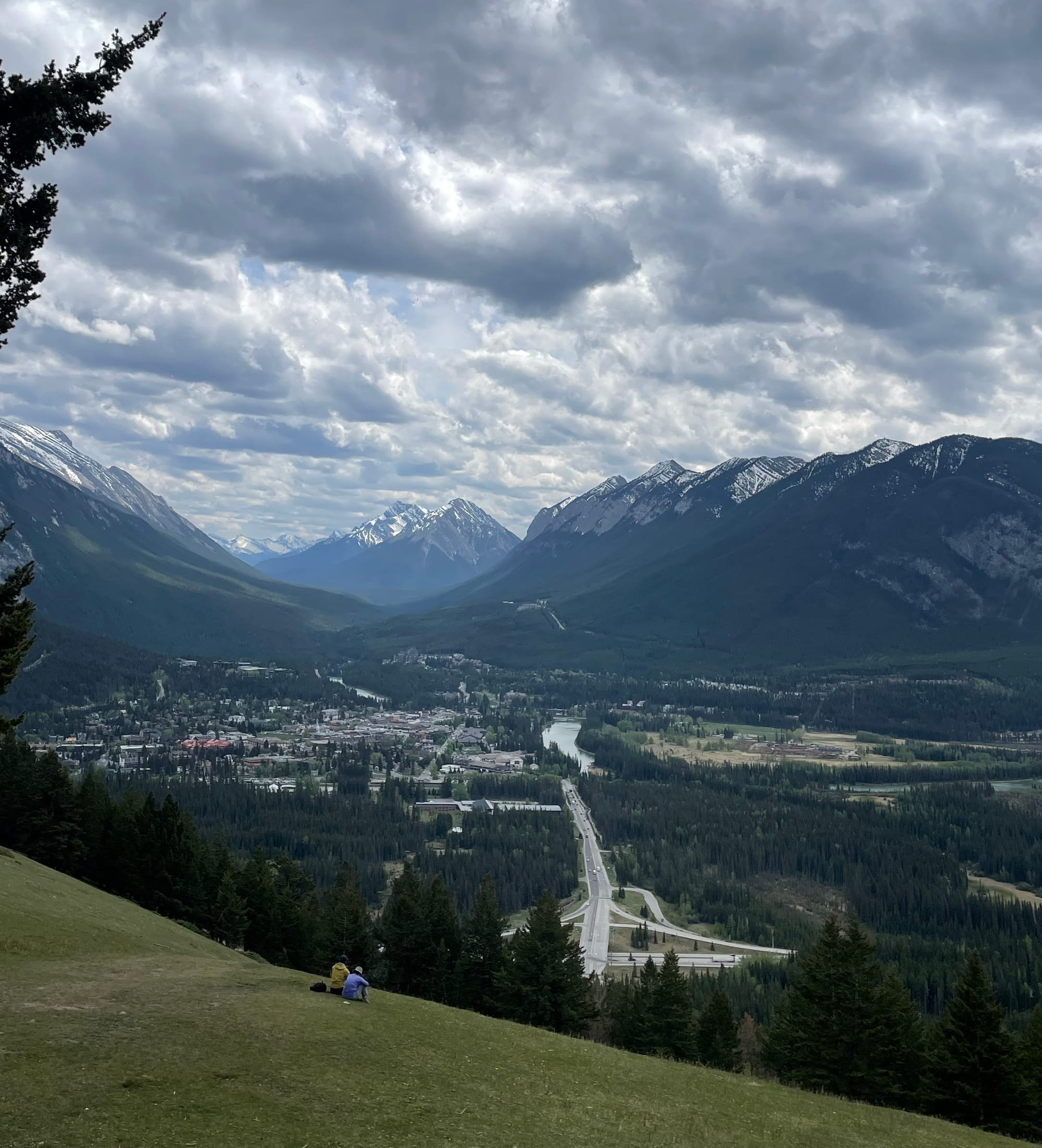
I think this extra parking space at the side of a zigzag road is an outcome of overcrowding. Lots of traffic to the view point has likely led to more parking being created at the edges of the road to keep the road safe, from a traffic jam or people stopped with flashers on.
Bow Falls
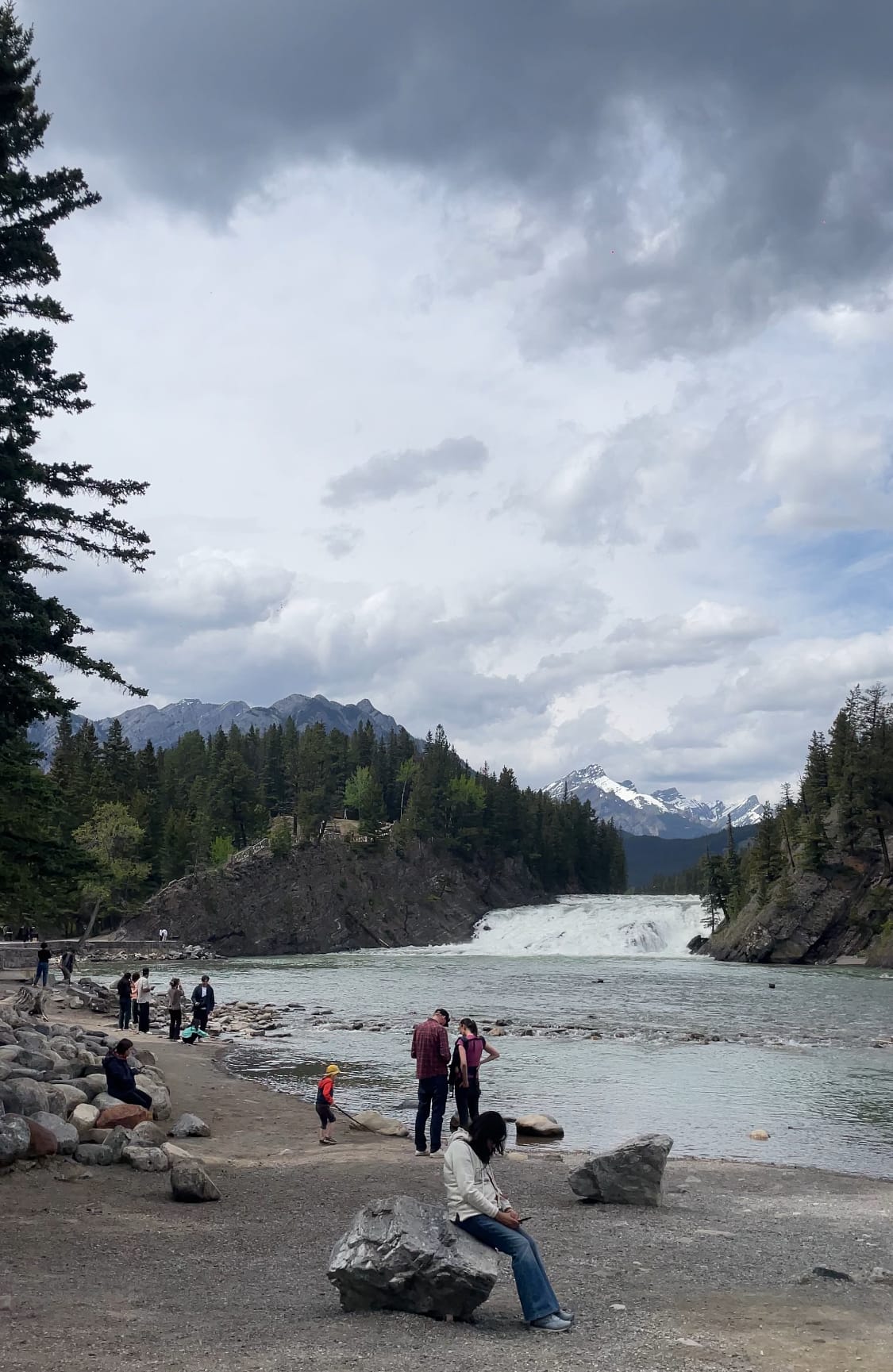
May 27 - Tuesday
Research 🐿️
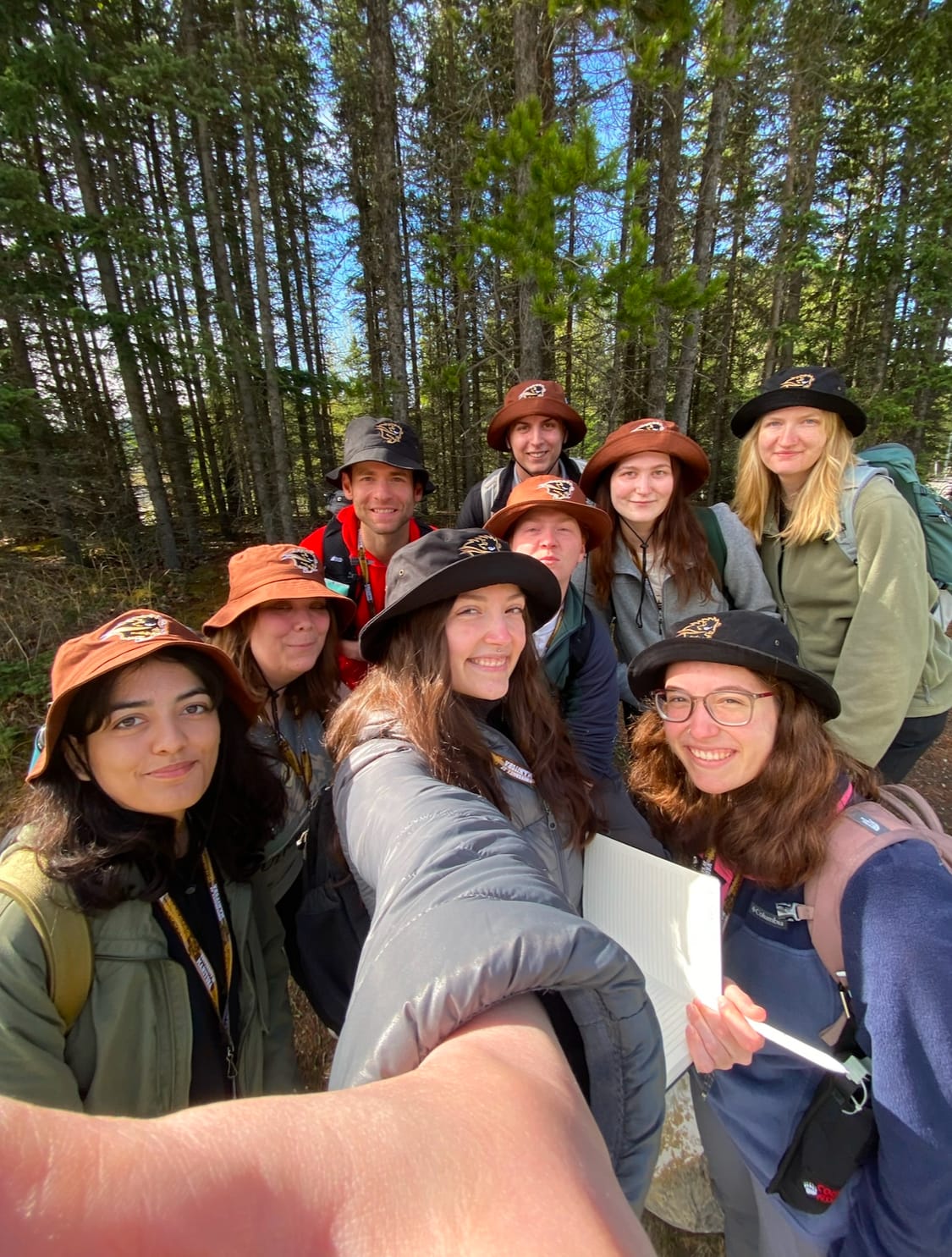
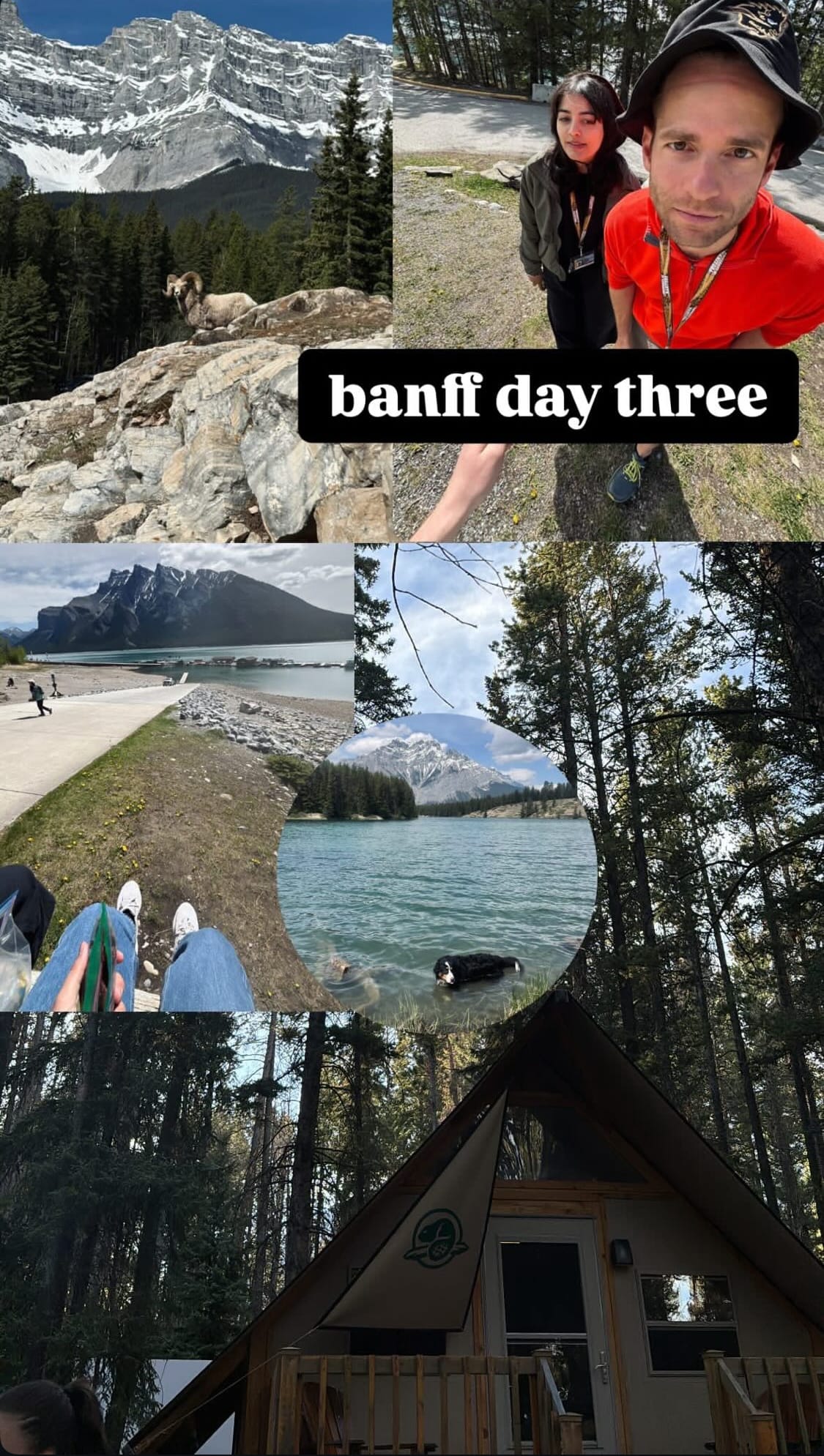
First day of researching at Lake Minnewanka we discovered the spots that could get the most people, & got into the groove of giving out surveys. Bikers were really hard to get because they wouldn't stop.
May 28 - Wednesday
Off day:
Rafting
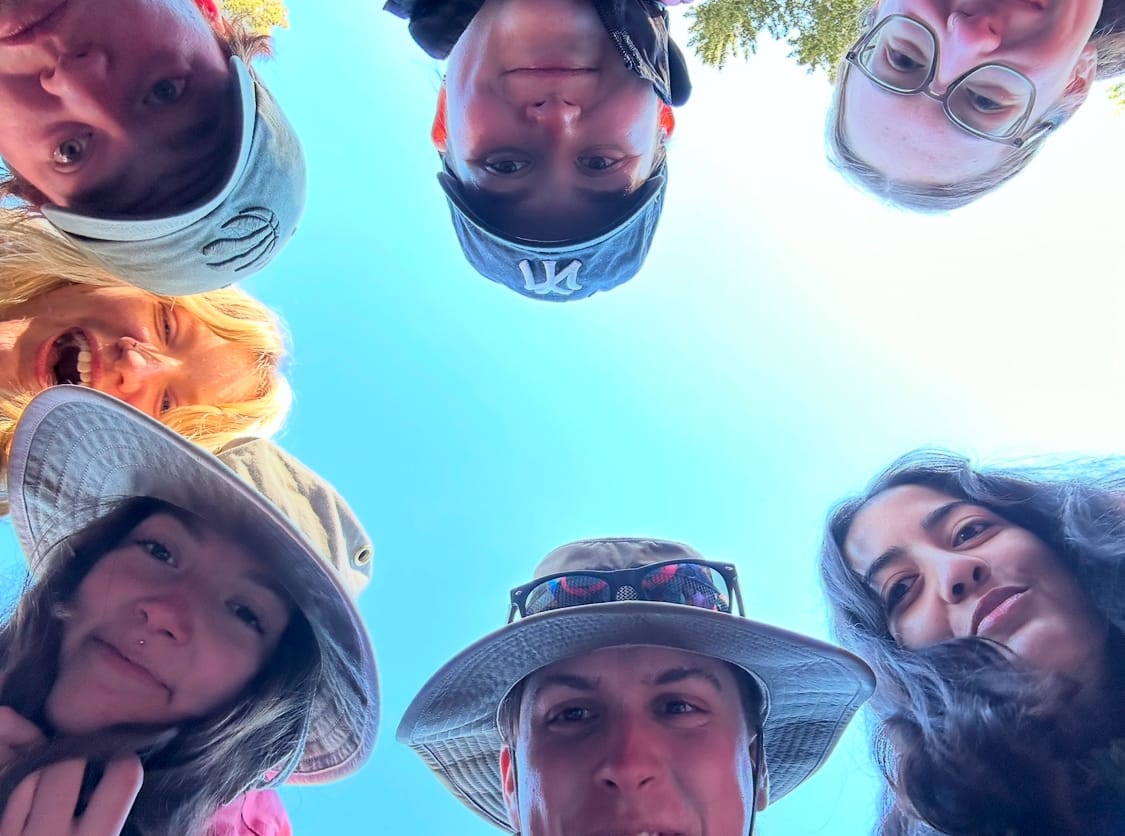
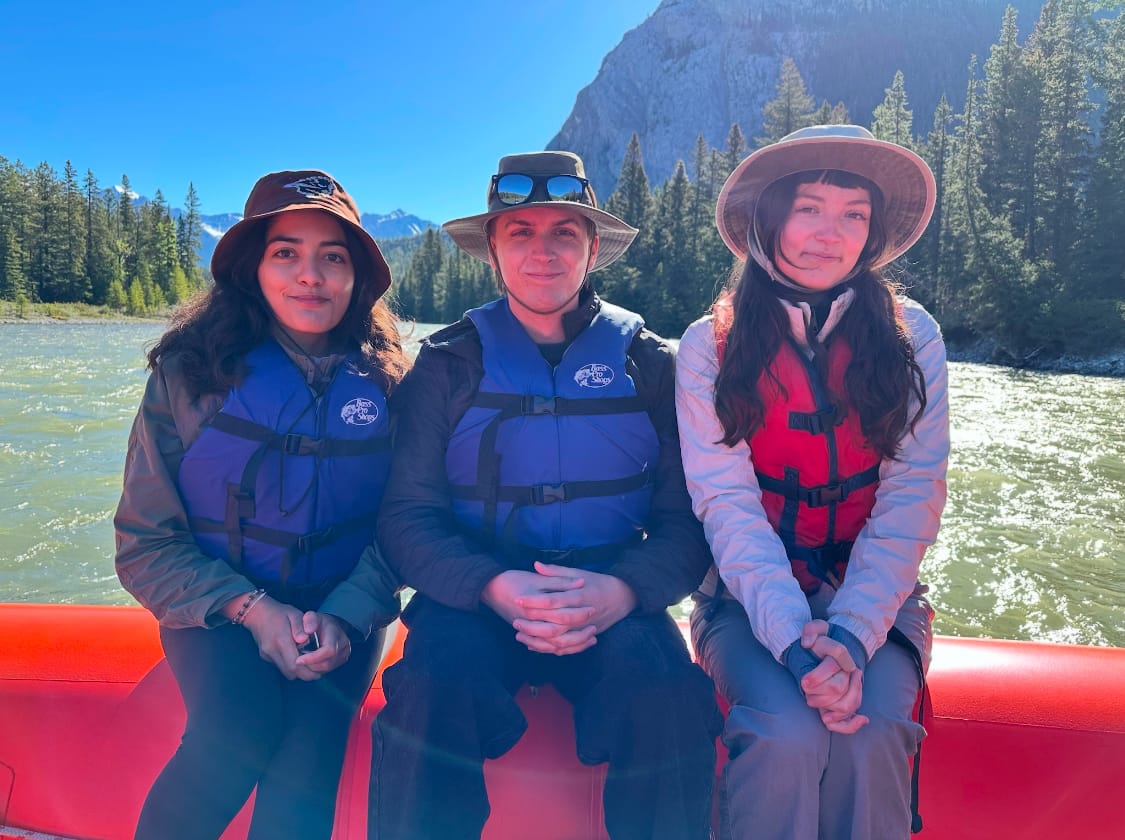
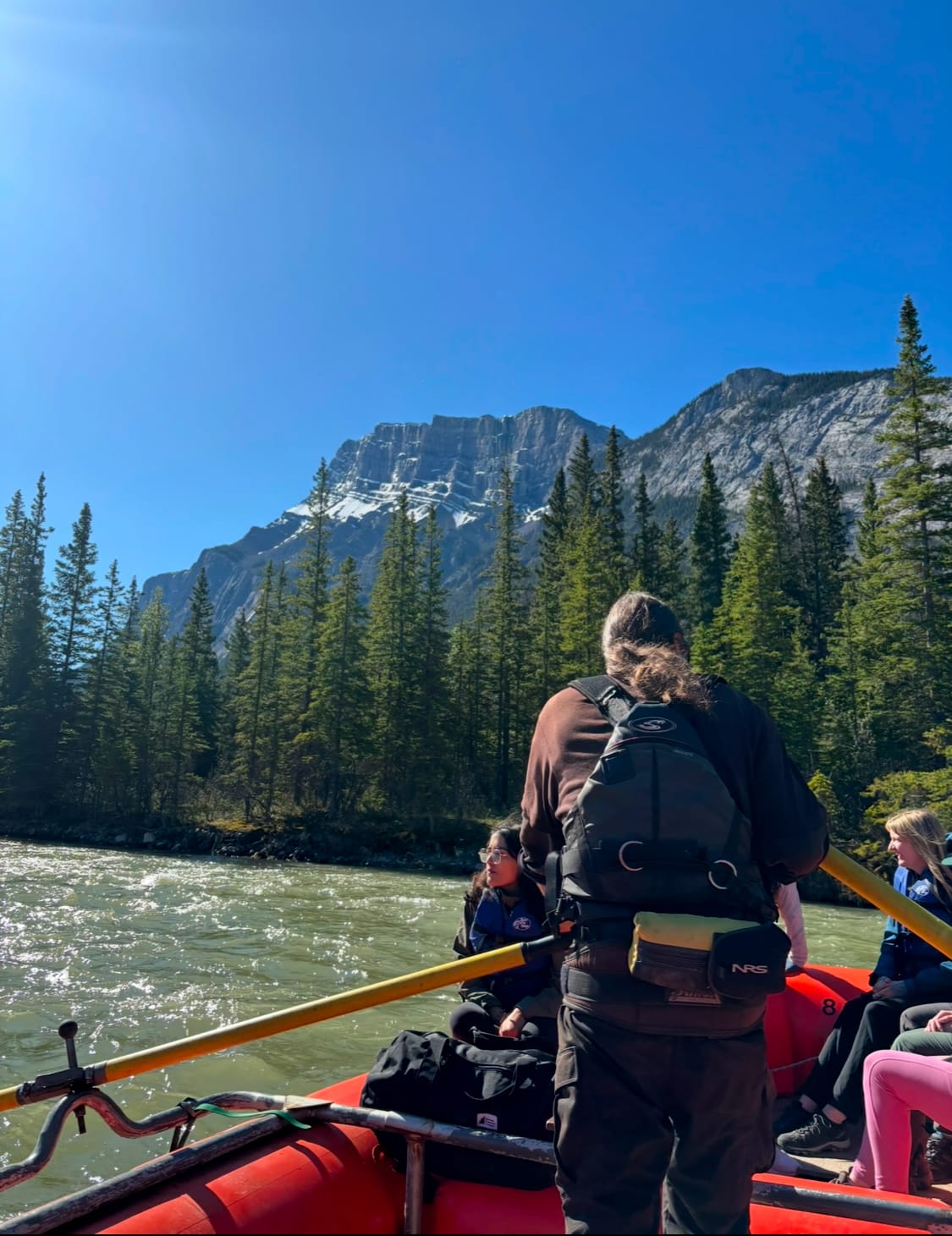
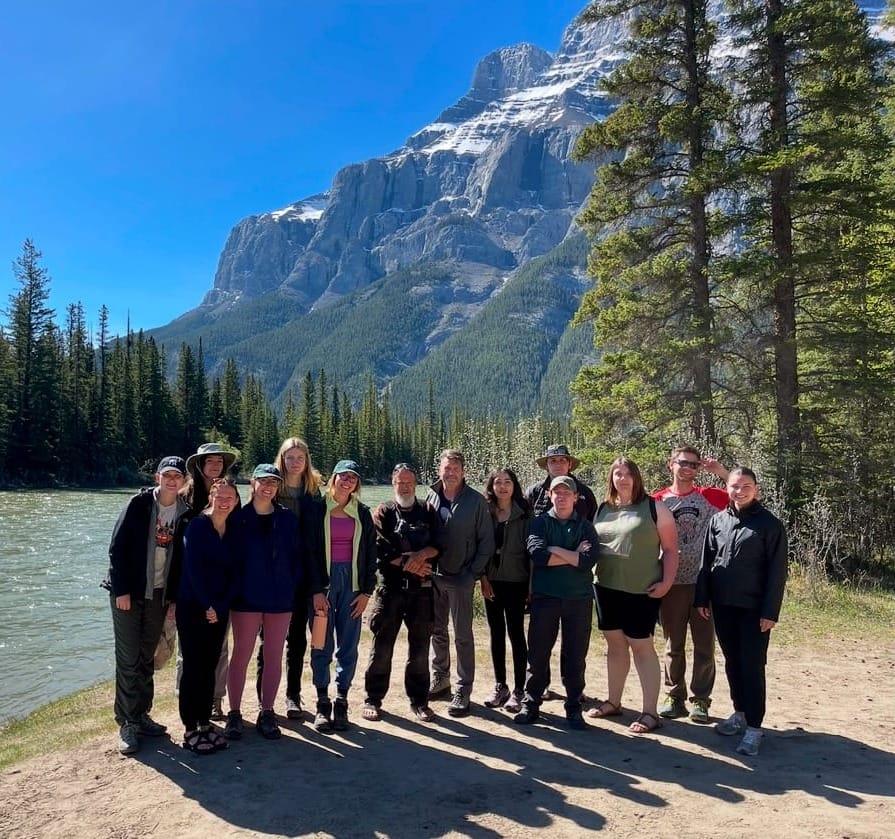
It felt great to show up early, before opening & beating the crowds for the rafting tour with such an experienced guide —& listen to his stories about India.
Farmers Market
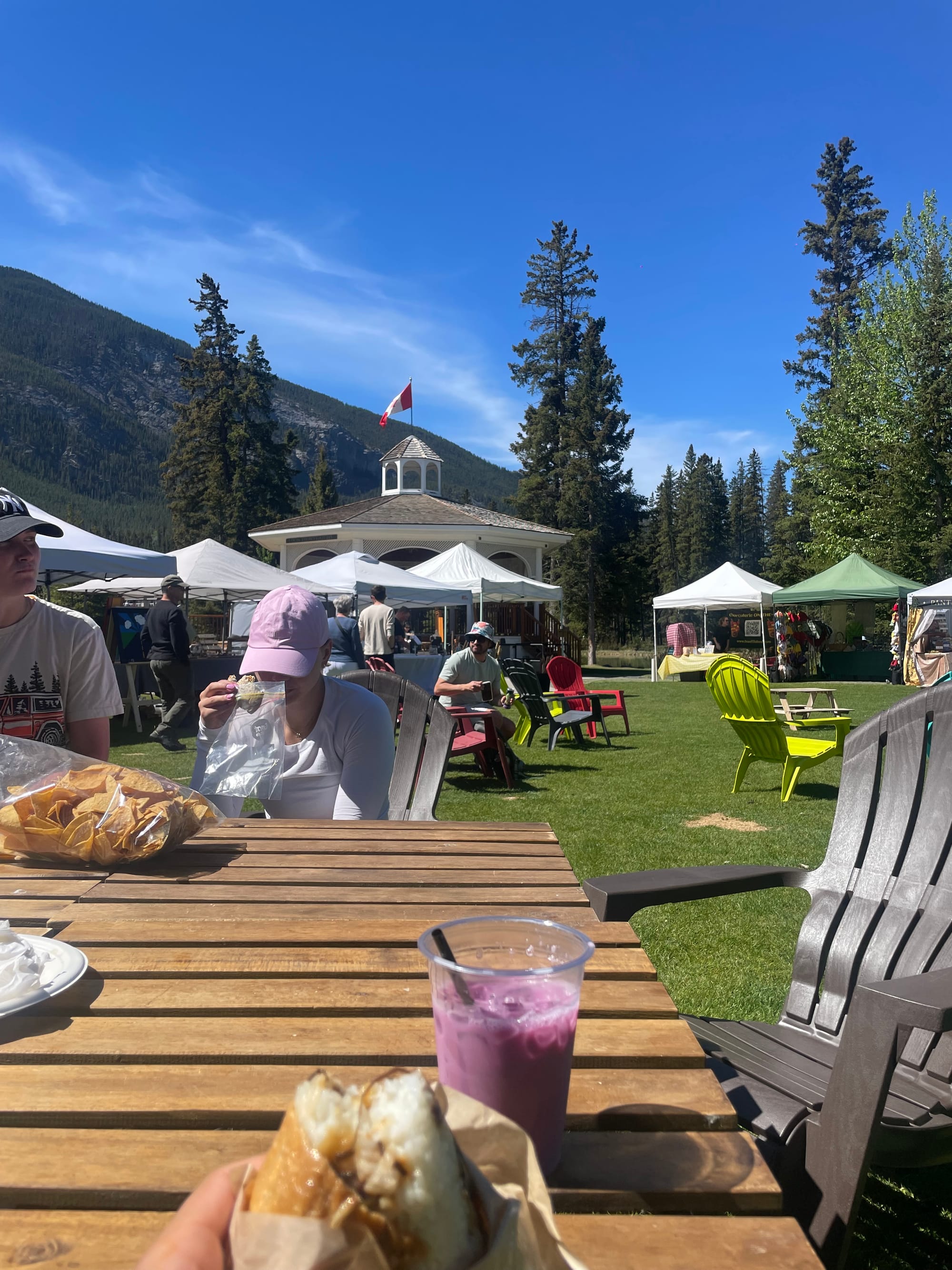
E-biked Banff to Johnston Canyon
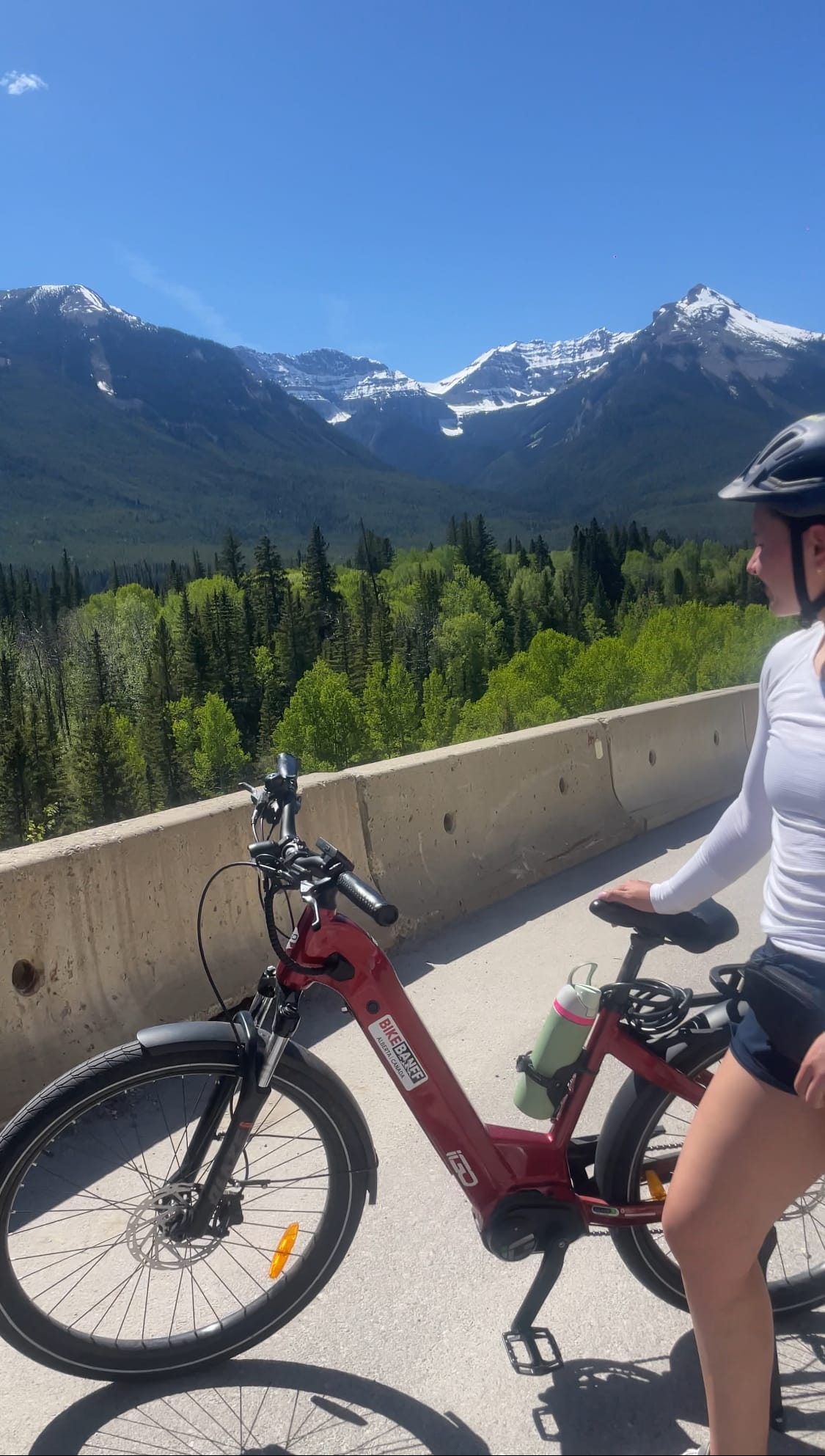
May 29 - Thursday
Town Hall — This presentation was a highlight of the field trip, as it was intriguing to hear about the politics within Banff & its design features. I got a new lenses on the struggles of Banff locals. We learned about how Banff Ave. was opened to cars due to a close voting odds. It was sad to see because it closed to cars last summer & it felt so nice as a pedestrian to walk where ever you want. With locals fearing the overcrowding car traffic will end up in front of their houses. I wonder if it is possible to close off or add gates like a parking garage to the streets locals live on - & the impacts of this.
Future plans & politics in play according to the presentation: Banff is dropping as a destination because of its congestion & cost. One fix is the Calgary to Banff rail. There’s also the $12 On-It bus from Calgary airport, but it needs better incentives & disincentives. On-It allows more Banff people are to head into Calgary, & more Calgary people that don't own a car to visit Banff. The east entrance gate is always open & just registers cash—gate is not helping manage crowds. Private companies like PC Rail shouldn’t control access decisions. Intercept parking works better: parking outside town. The railway lot alone keeps 5000 cars out of downtown, & there are new plans to add more. Roam Transit helps, but overflow buses struggle with stragglers & capacity. It's free for locals, & hotels pay Banff a flat rate so guests ride for free. Still, roads are packed, parking is $15/hr, & buses stay empty. Incentive: locals get $500 to buy an e-bike. De-incentive: Resident zones have 8am–8pm no-parking signs. But residents don’t want more pedestrian-only zones (like Bear St. or Banff Ave. being a pedestrian only zone) —car traffic just shifts to residential streets. Visitor-adjusted traffic modeling is tricky—“all models are wrong, some are useful”—and these are political decisions, especially at the federal level. There are also public-focused infrastructure projects like the Central Park pedestrian bridge (designed for elk & for people), the public washroom, & a nature-based playground. On Bear Street, the idea is to make the vehicle feel like a guest (via the Woonerf method) with no curbs, no lane-separation & obstacles on the road to make it inconvenience for cars & make them naturally go slower. They’ve also implemented stormwater drainage with bioswale treatment, before it joins the bow river.
Sulphur Mountain Gondola
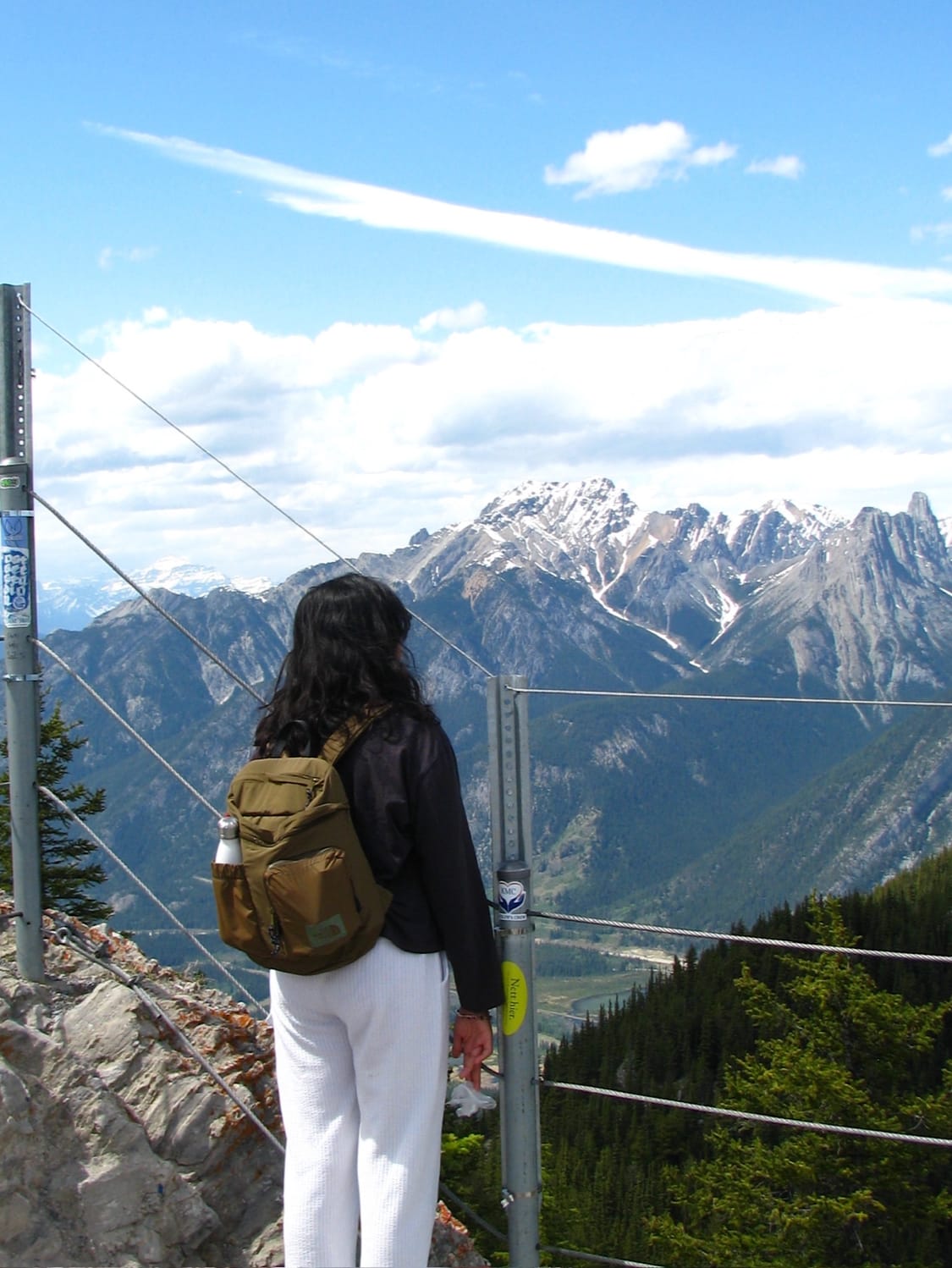
Litter I noticed litter high above from the gondala & on the trials once reaching the top (wherever humans are) -maybe the shops should use only biodegradable packaging —create littering fine incentives, with cameras. I picked up a ziplock bag that would have eventually fallen off the trail into the wild. Most ppl just walk by this litter. It is such a contrast to the views we go to experience but we do little to preserve them unless it is enforced. Maybe we should try implementing the preservation in our subconscious bias of social/cultural norms like Japan has done.
Banff has 4.5 million visitors per year, these sustainability choices (biodegradable single use items/packaging, creating social norms) can spread all over the world if the visitors see the implementation in action at Banff.
May 30 - Friday
Research 🐿️ —More of the same routine handing out survey QR's today, but at the start of it Mackenzie Bear sprayed herself by accident, as she was pulling her backpack out a van compartment the safety came off the spray went off angled perfectly in the direction of her eyes & the roof of the van. We learned why it is important to keep bear spray in the trunk & not leave it in the car when you leave.
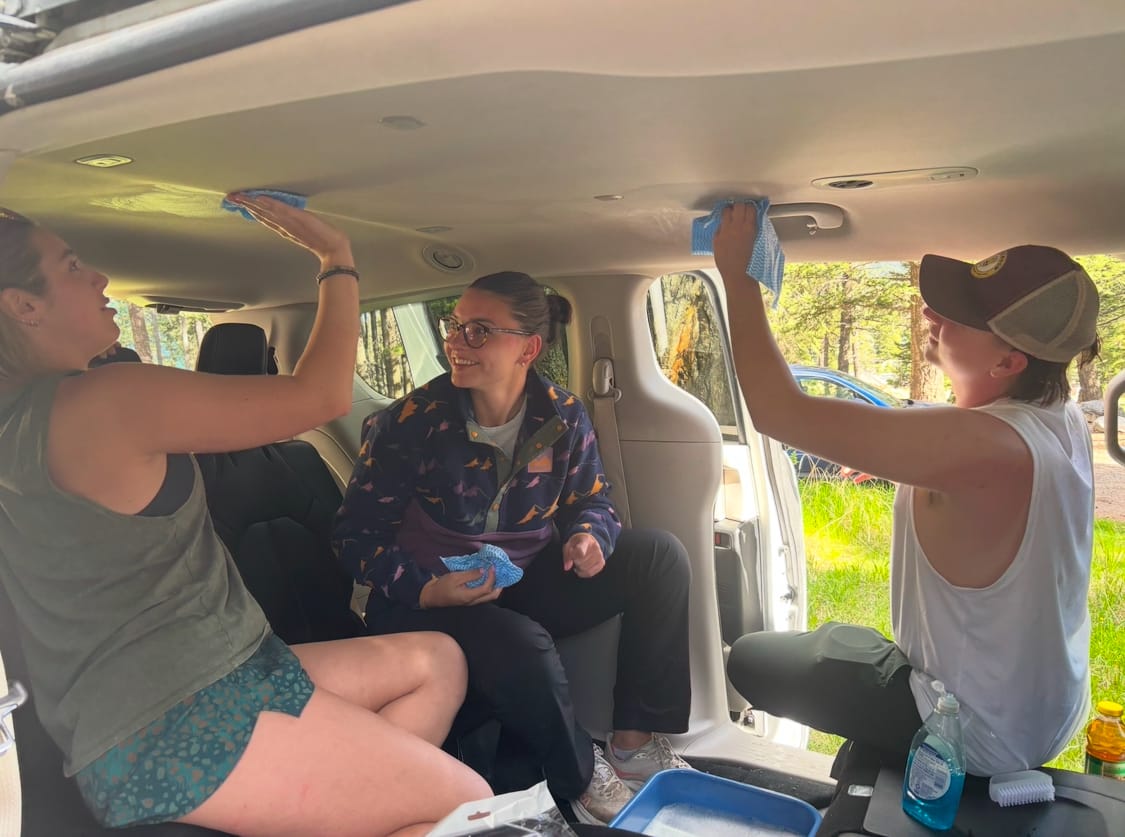
Cliff White – Mountain → fire, ecology, & the re-introduction of the Bison
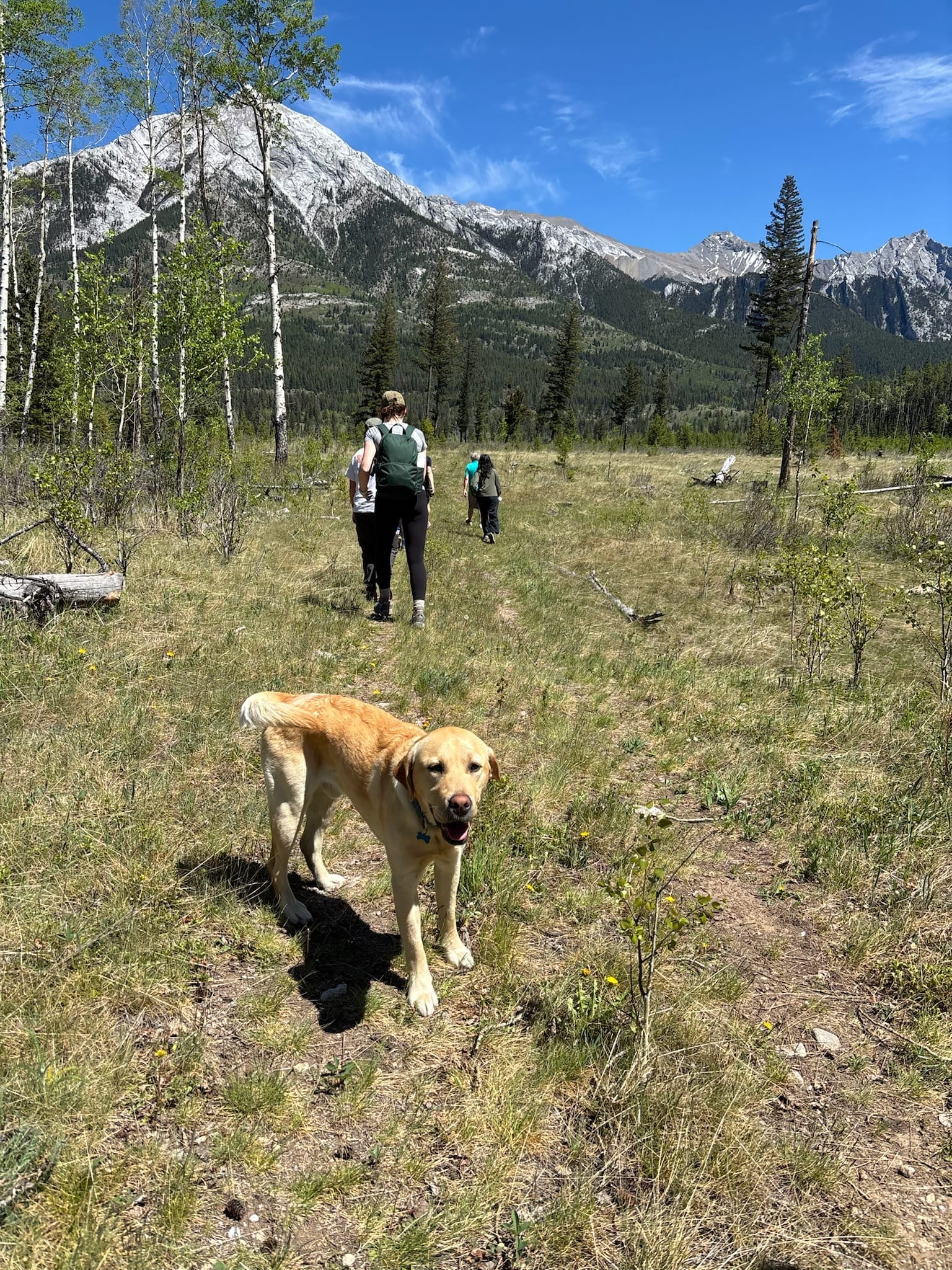
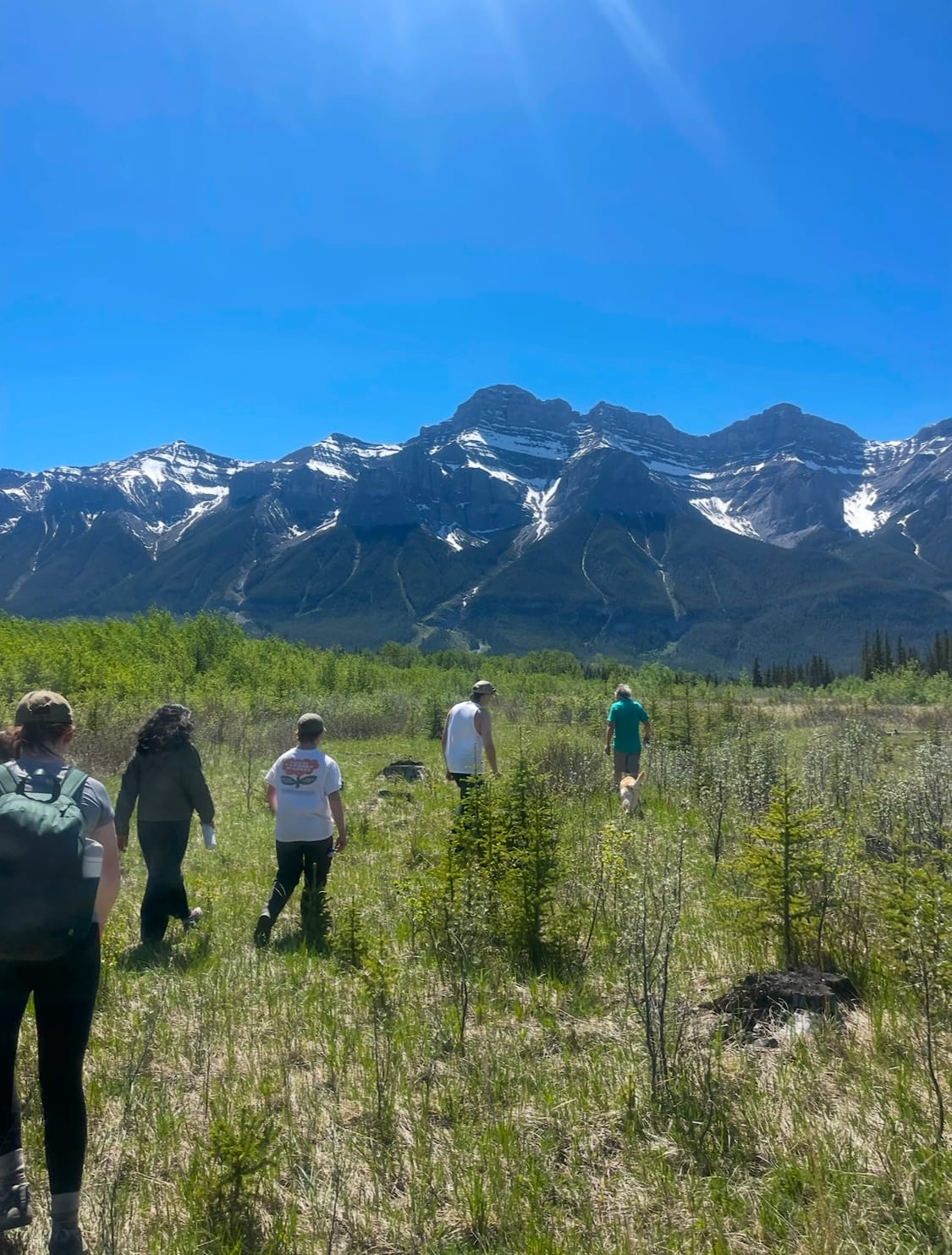
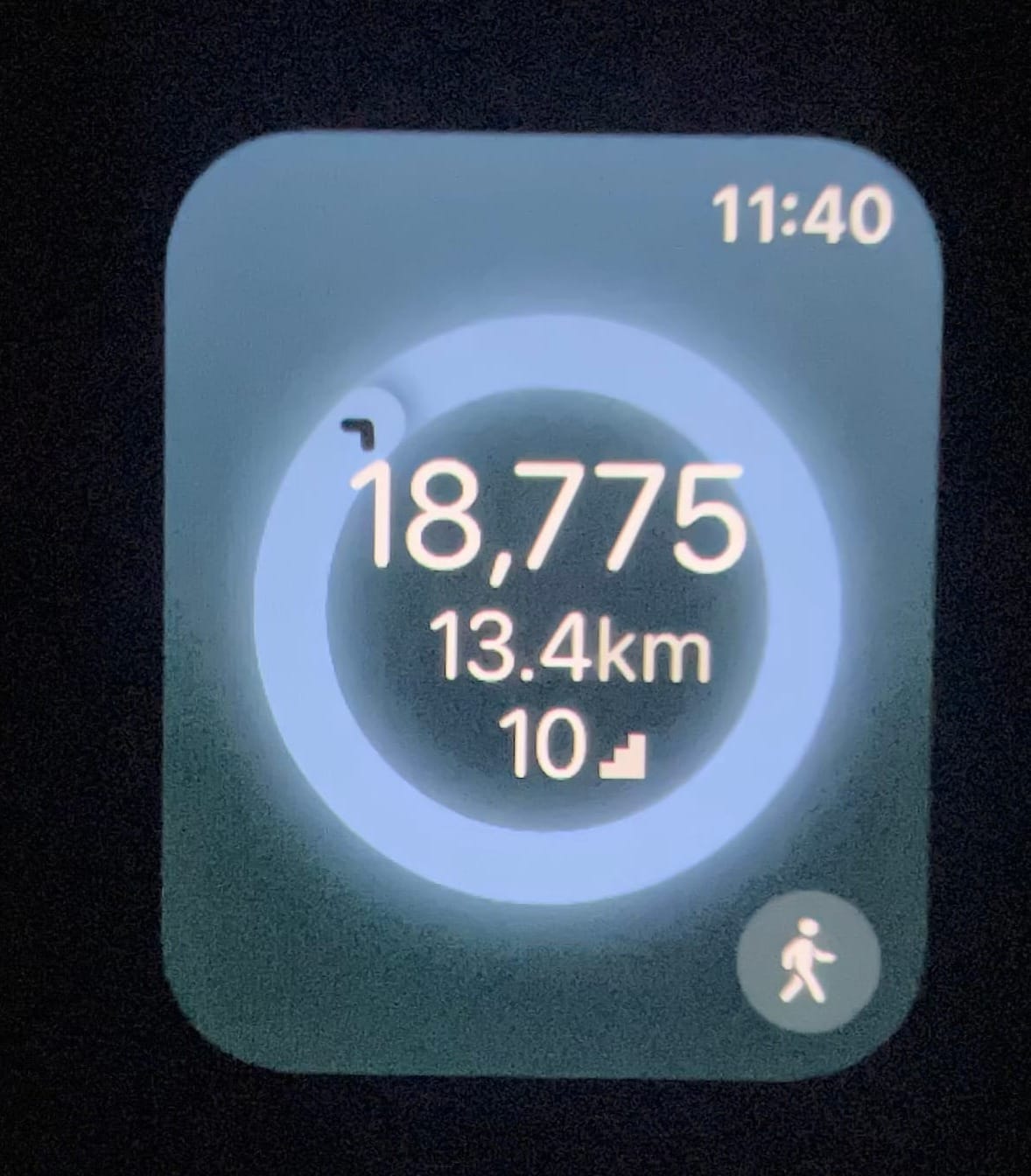
Cliff White showed/taught us about his local landscape, opinions, & his career with Parks Canada prescribing forest burns to keep towns safe —creating clear fields with no fuel to prevent fire spread. He taught us about the trophic tree/cascade & interconnectedness of aspen, elk, & wolves. Also, the recent reintroduction of Bison in the area.
I was at 12.2k steps at 6pm before I bused into town to eat & study. By 9pm shops [retail] started to close yet there was still so much overcrowding people on Banff Ave. I think because restaurants were still open & the fact that people also enjoy the night view.
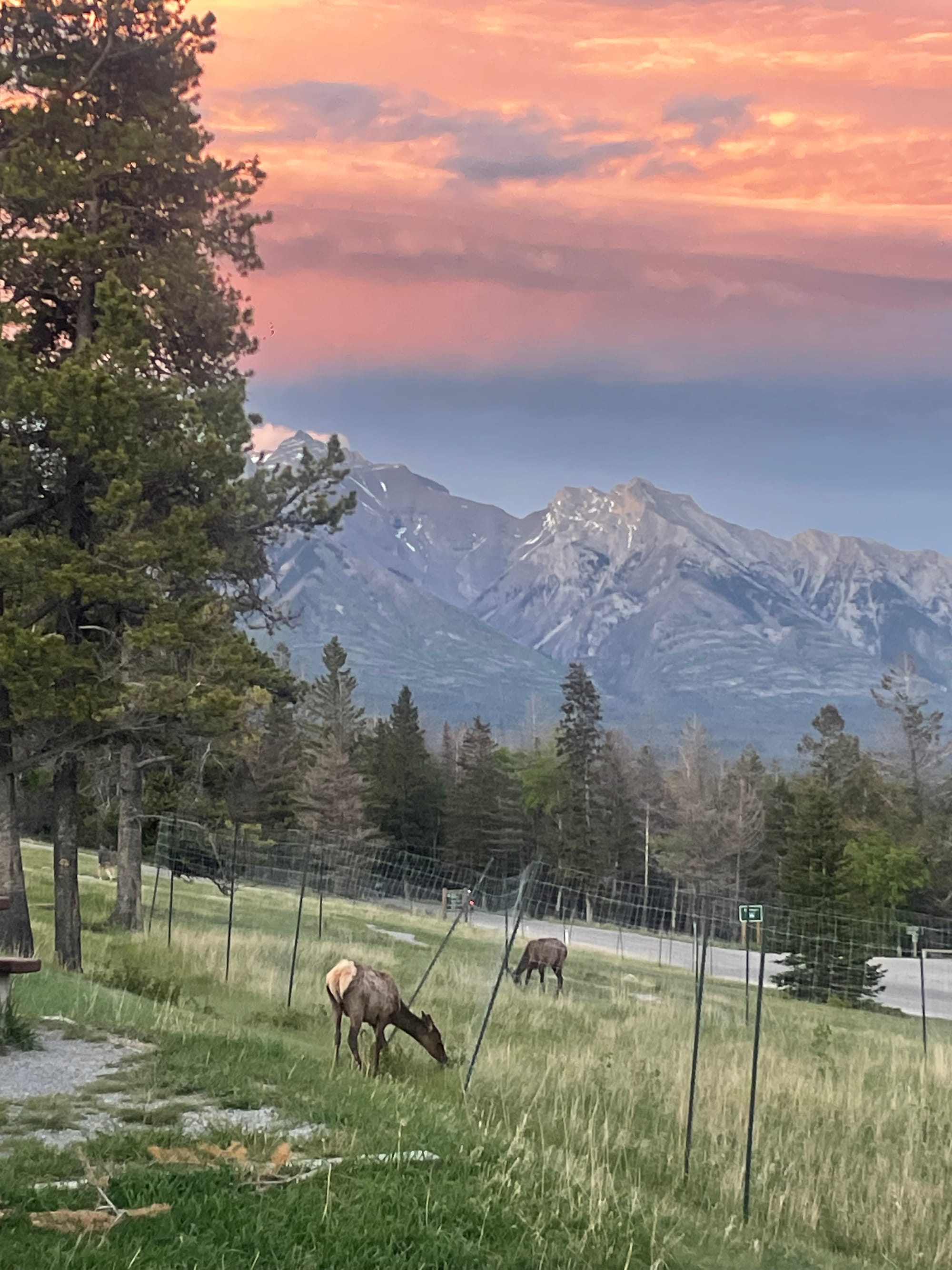
I then walked back to the Tunnel Mountain 2 campsite since there was 40 minutes to sunset & a 40 minute walk to the campsite. Just as I reached the site I saw 2 Elk & ppl taking photos of them. The Elk seem to not mind our presence & maybe even take comfort in our presence because we keep predators [wolf's] away with our presence but we don't hurt the Elk - I think this can be seen as habituation.
When I went to bed I saw that I had reached 18.8k steps, but my body didn't even feel tired like it usually does when I do this many steps, I still had lots of energy. I admire this quality of Banff's layout, that even after a full day of activities [surveying, hiking, etc.] the town makes it easy to want to walk around, feel curious & spend all your savings on food, goods, & experiences. To do all the things the people around you are doing or what you have seen on social media.
May 31 - Saturday
Research 🐿️
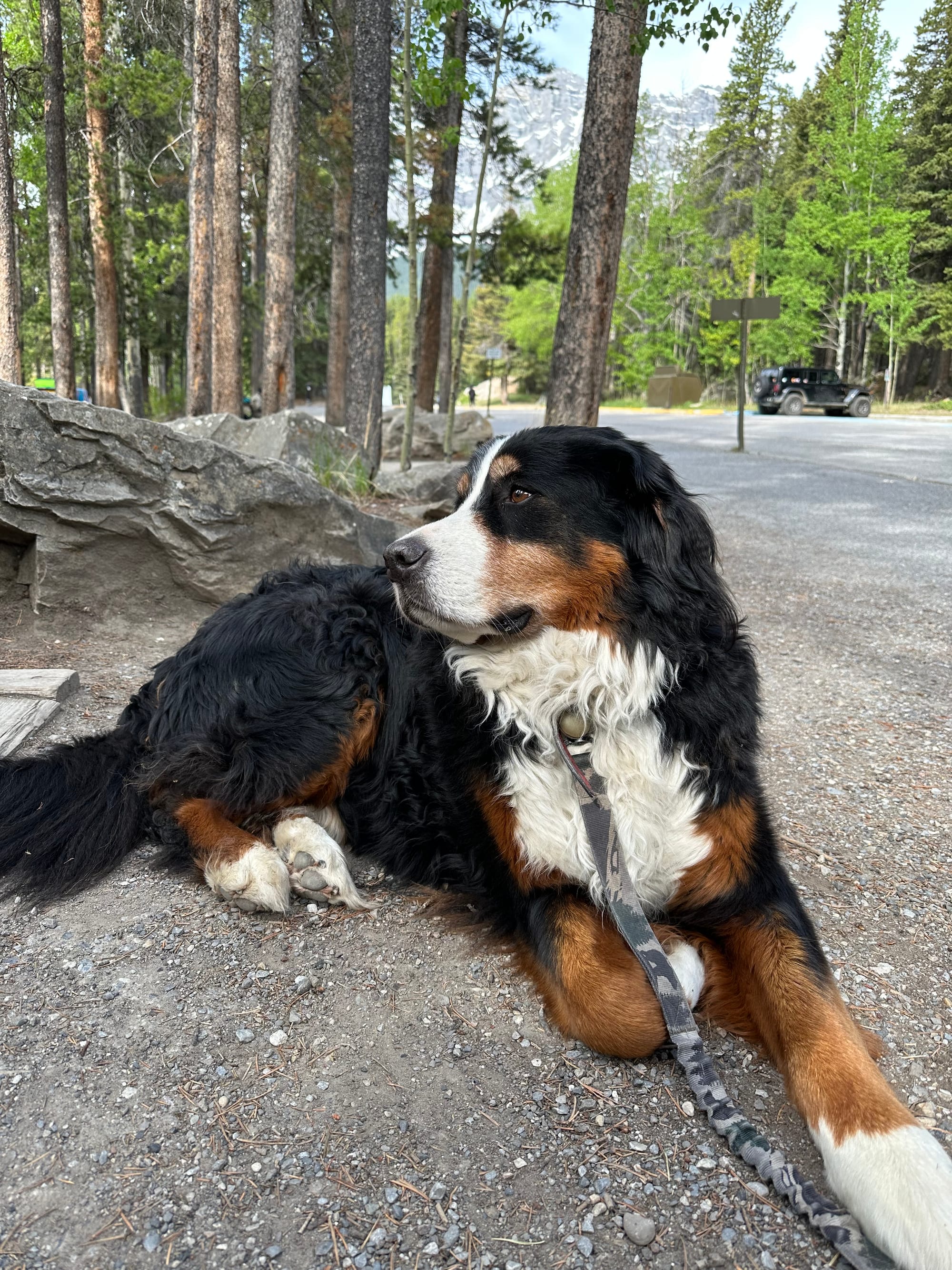
The following are more examples of habituation:
The geese at 2 Jack Lake also seemed habituated because we saw it being feed and not hiss or bite the kids the same size as the geese.
This was at the top of sulphur mountain, the squirrel didn't mind being in close proximity to humans taking pictures of it. It may get food from some litter humans drop or humans feeding it. When I was eating lunch on some rocks in Lake Minnewanka & this squirrel kept coming up to me, only a few inches away while I was eating. I think its comfort level of being so close to me shows that it has been fed in the past & that it expects being fed by coming that close to humans. It circling me impatient/expecting food form me, till I scared it off.
This was a cafe on Banff Ave. where the bird just flew in, hanging out around the floor maybe to eat the crumbs people leave behind.
I was happy this bird wanted to be close to me on Bear St. but I knew it was a sign of habituation, the bird expected some food when I stuck my hand out, but was confused when there was none.
June 1 - Sunday
Off day:
Heart Mountain hike
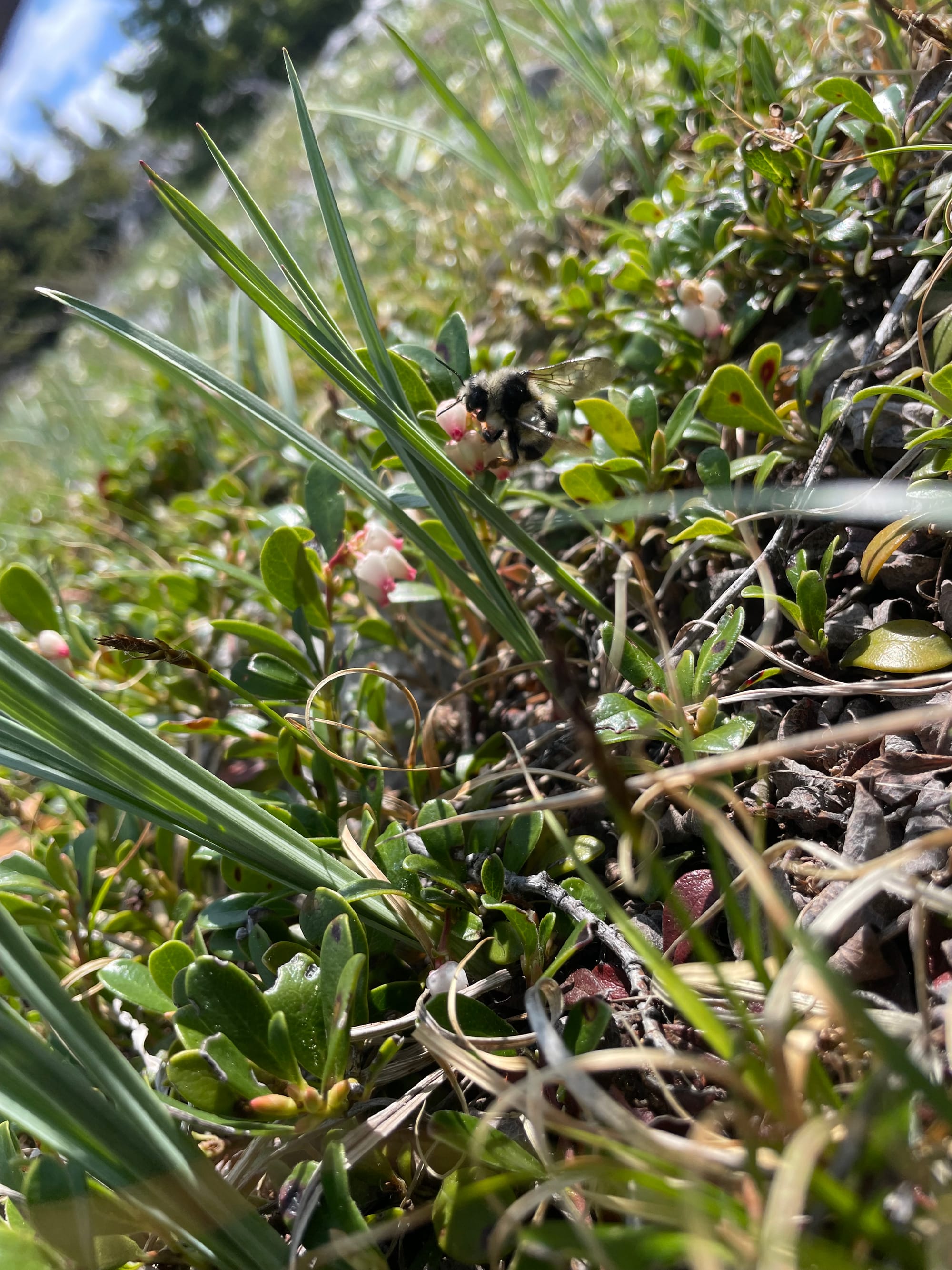
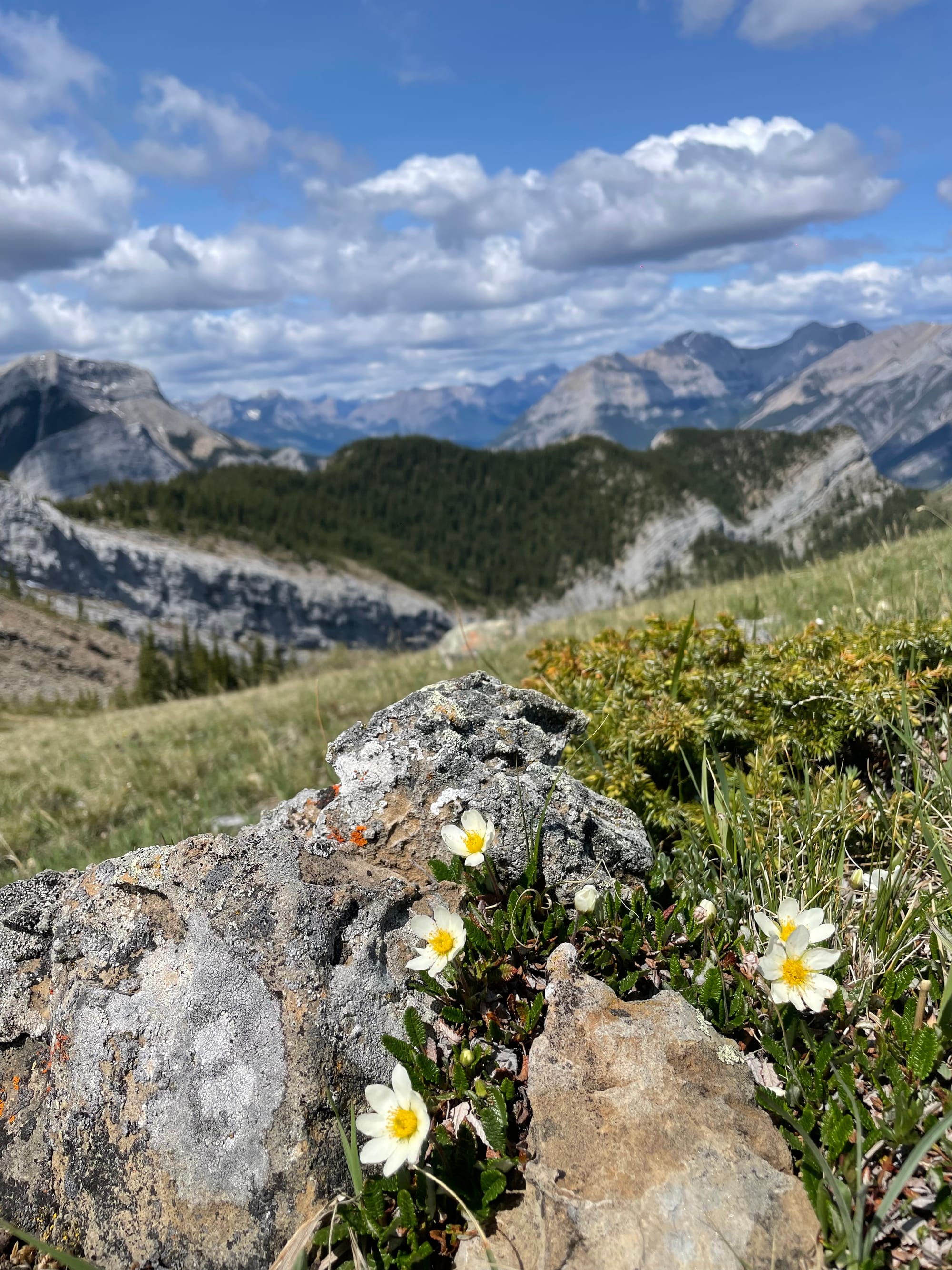
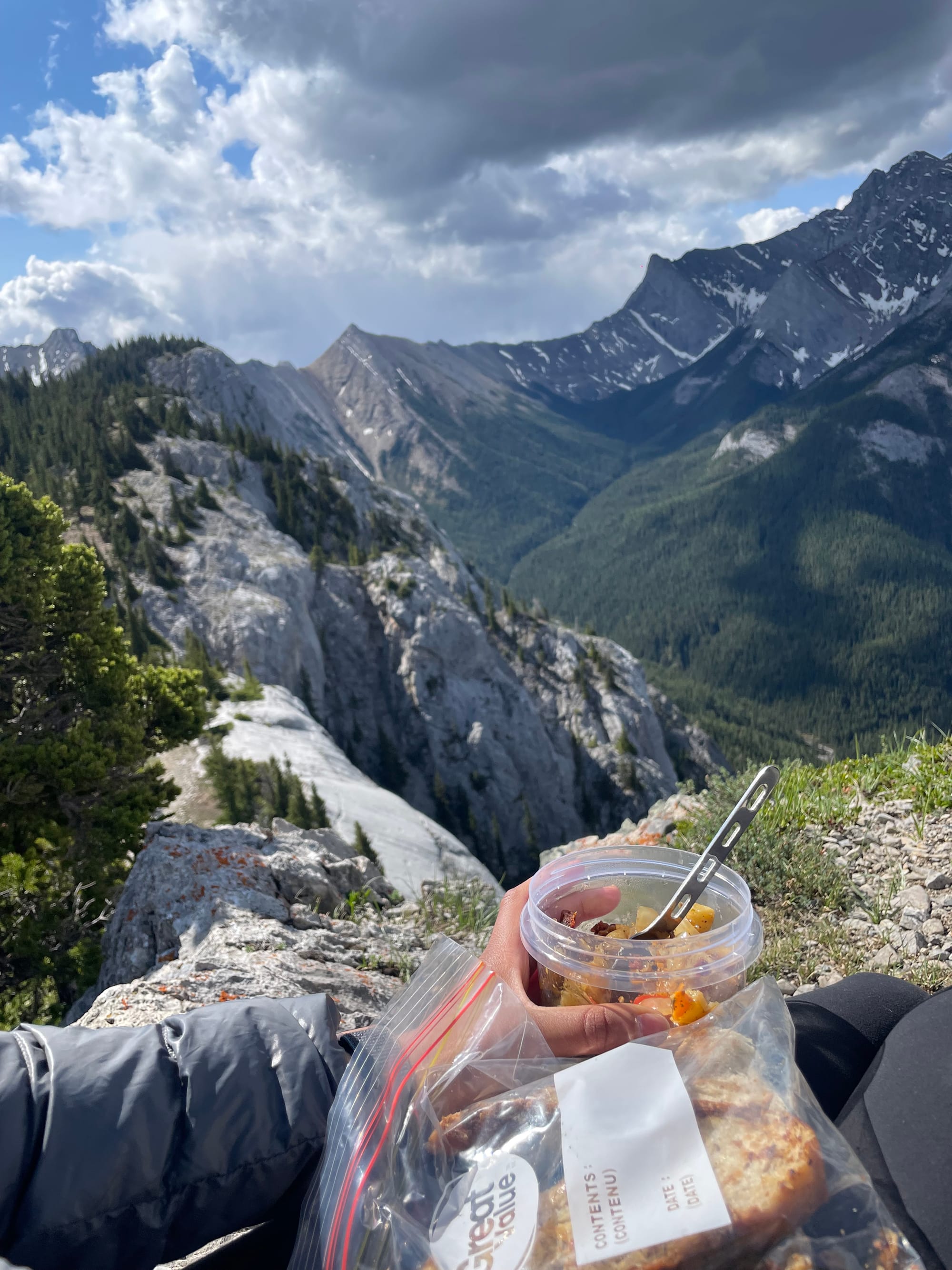
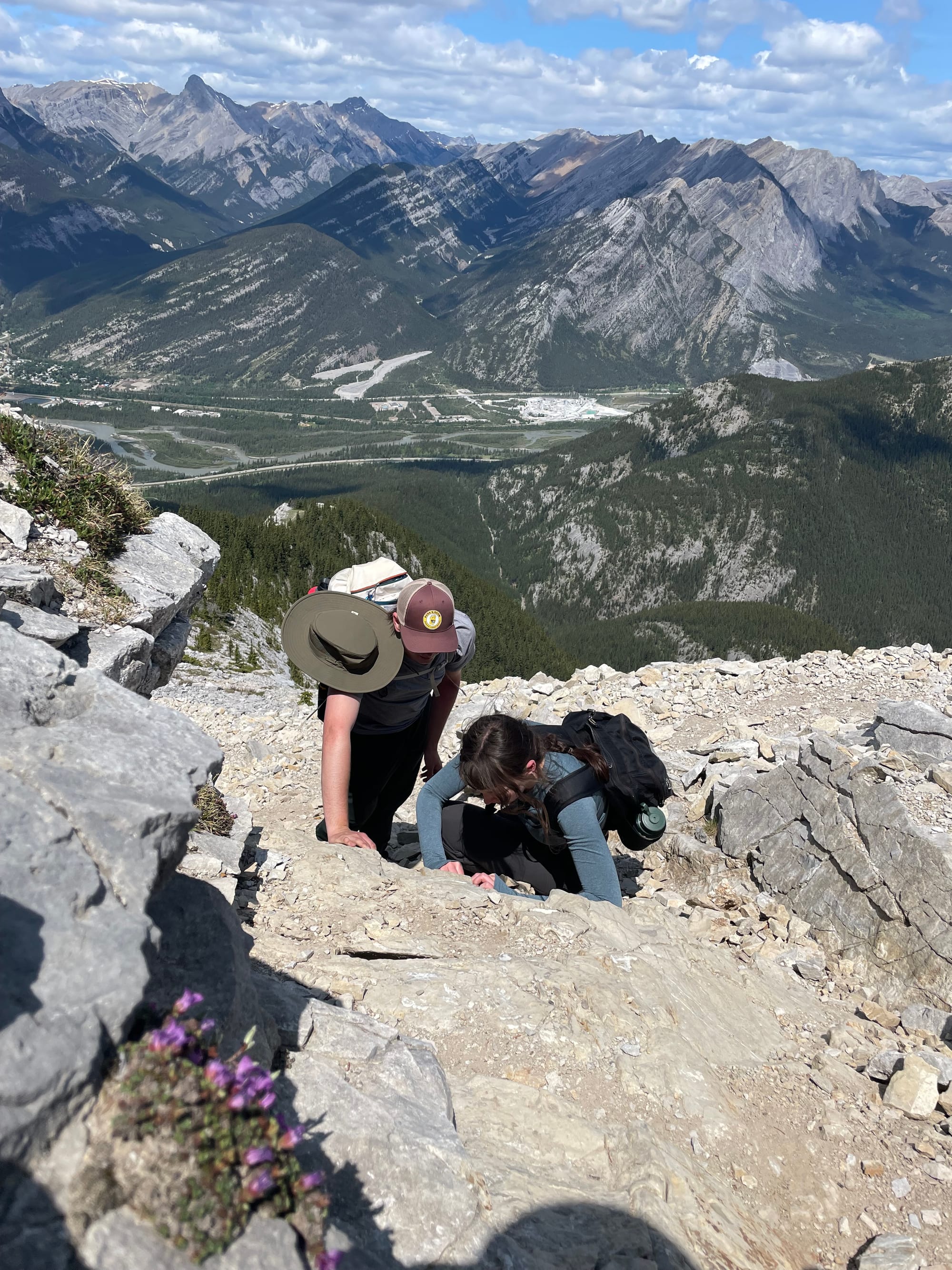
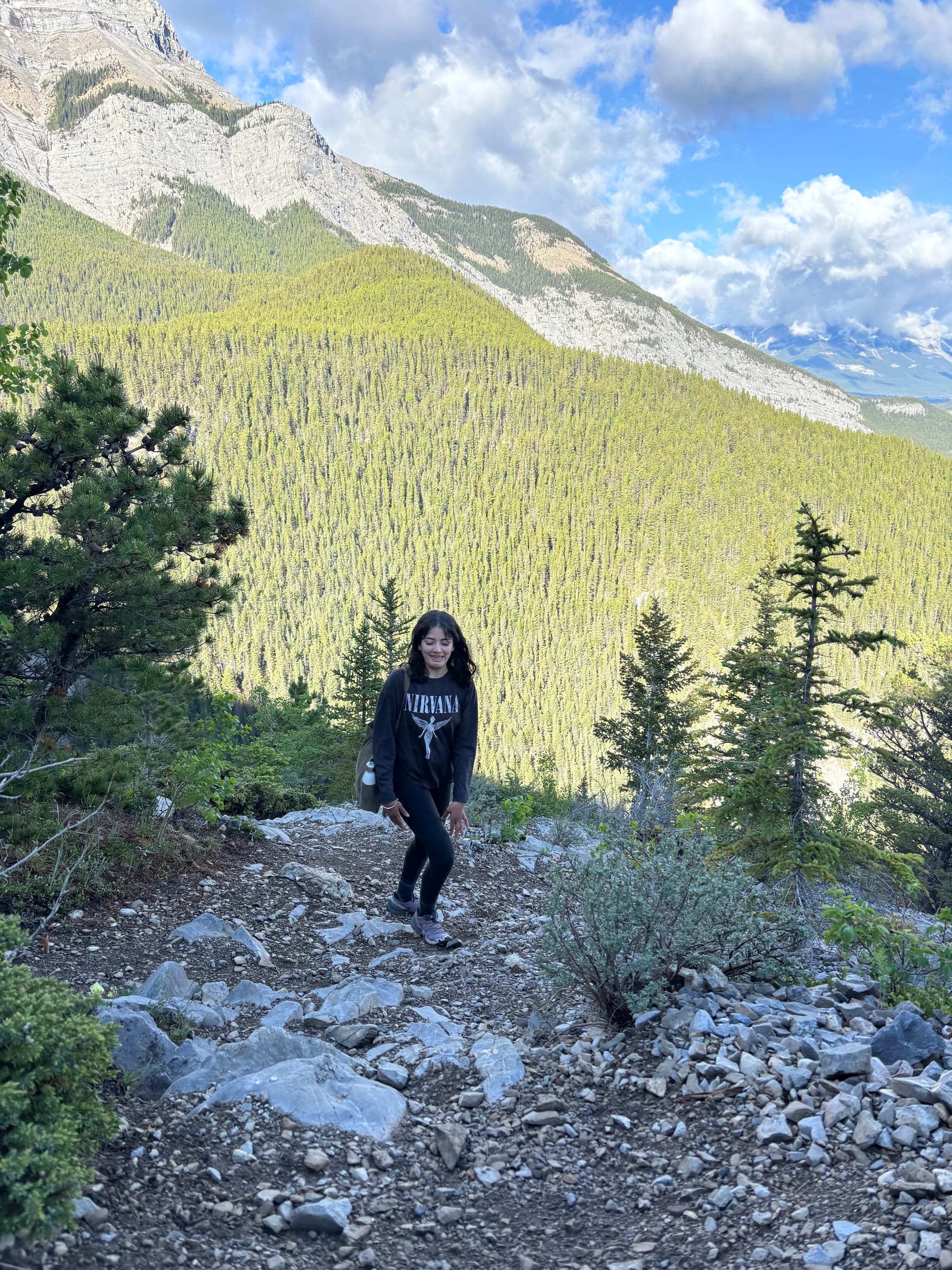
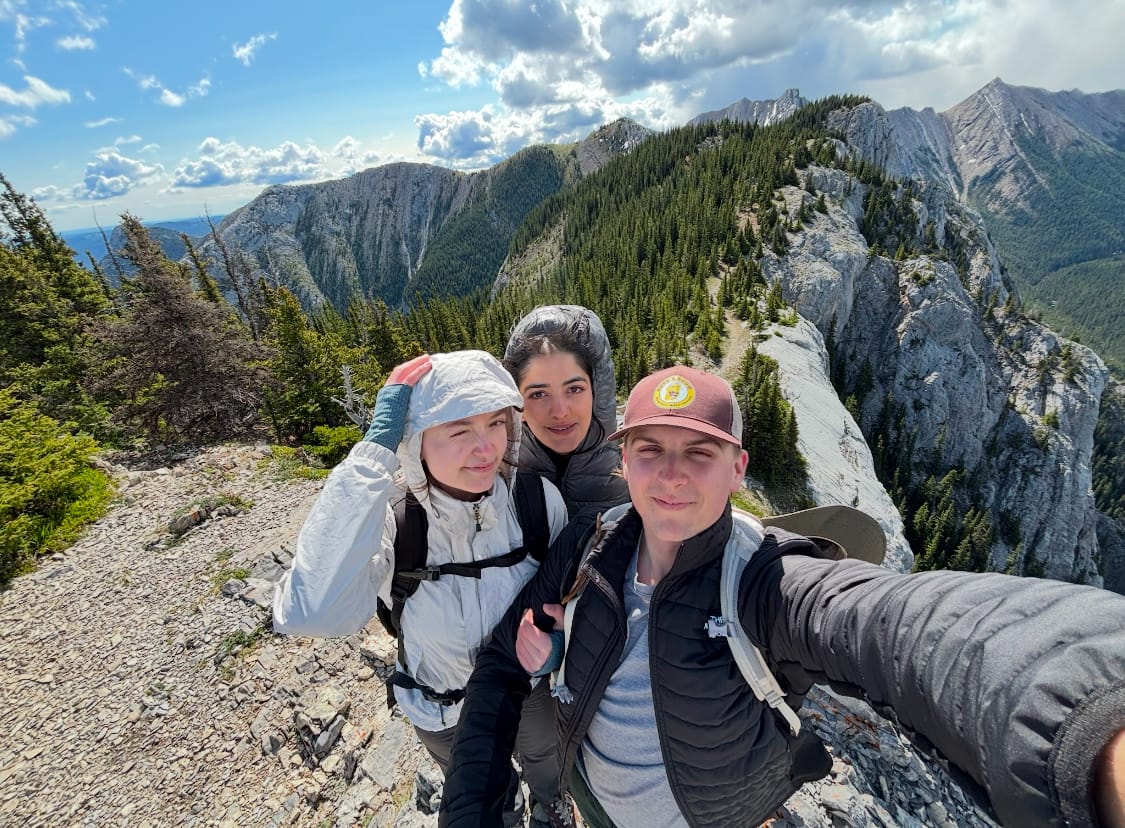
This hike was barely crowded, I think because of the scramble part & the crazy height on both sides most of the hike, definitely keeps many people away.
June 2 - Monday
Park & Ride system — park your car & ride to Lake Louise, Moraine Lake, & back to your car for $8 courtesy of Parks Canada. But there are pricier private shuttles approximately $30 offering the same experience for a premium price. Yay✨
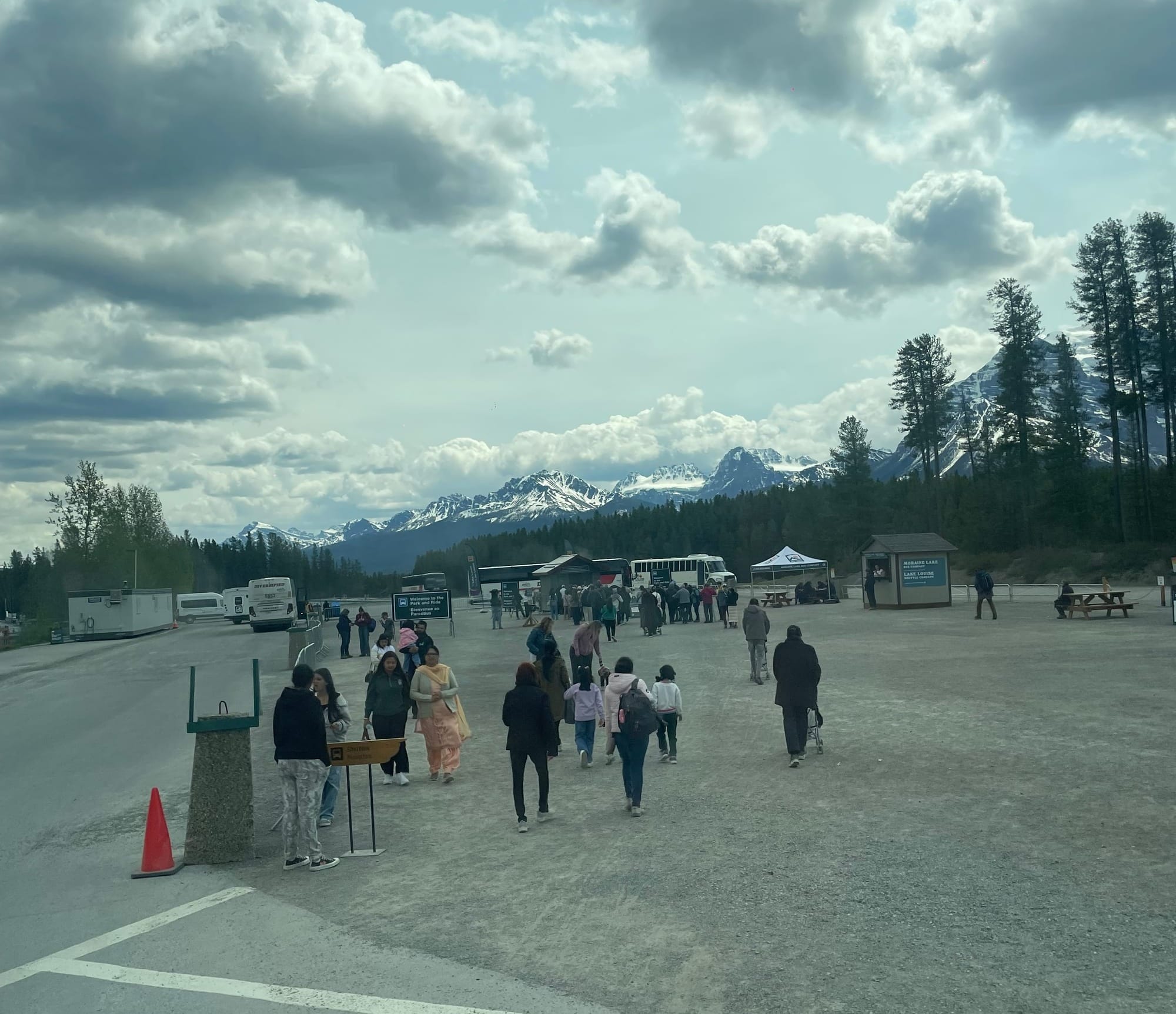
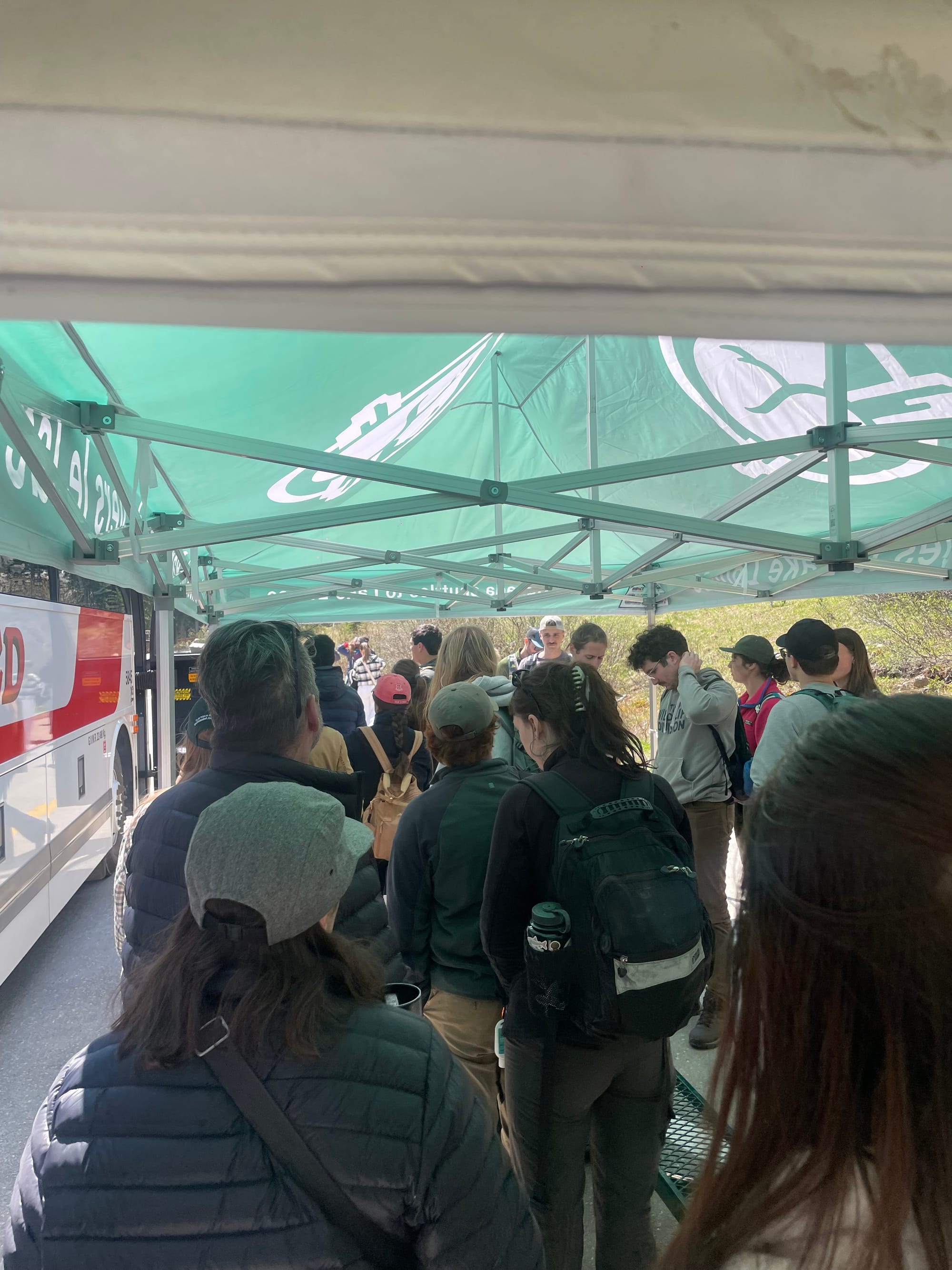
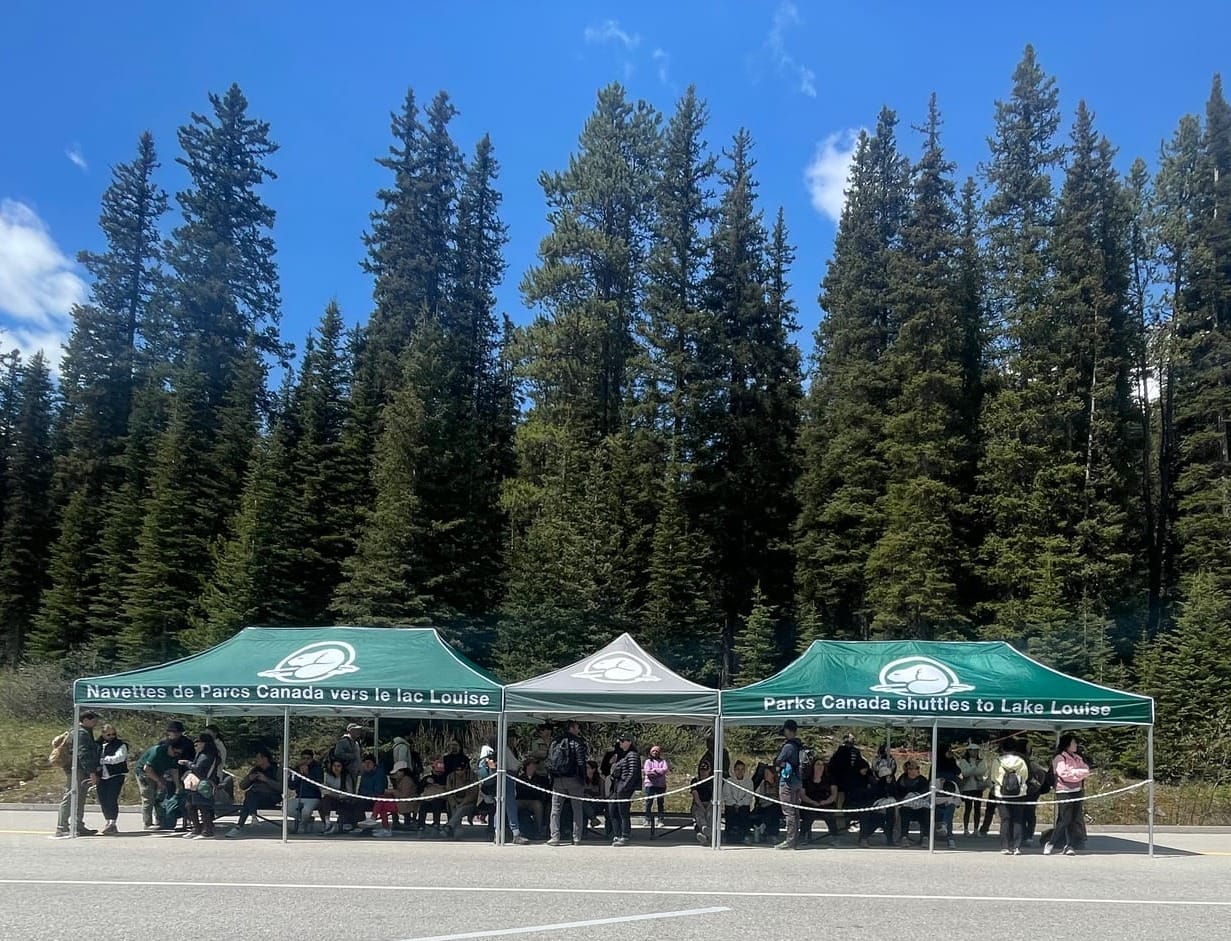
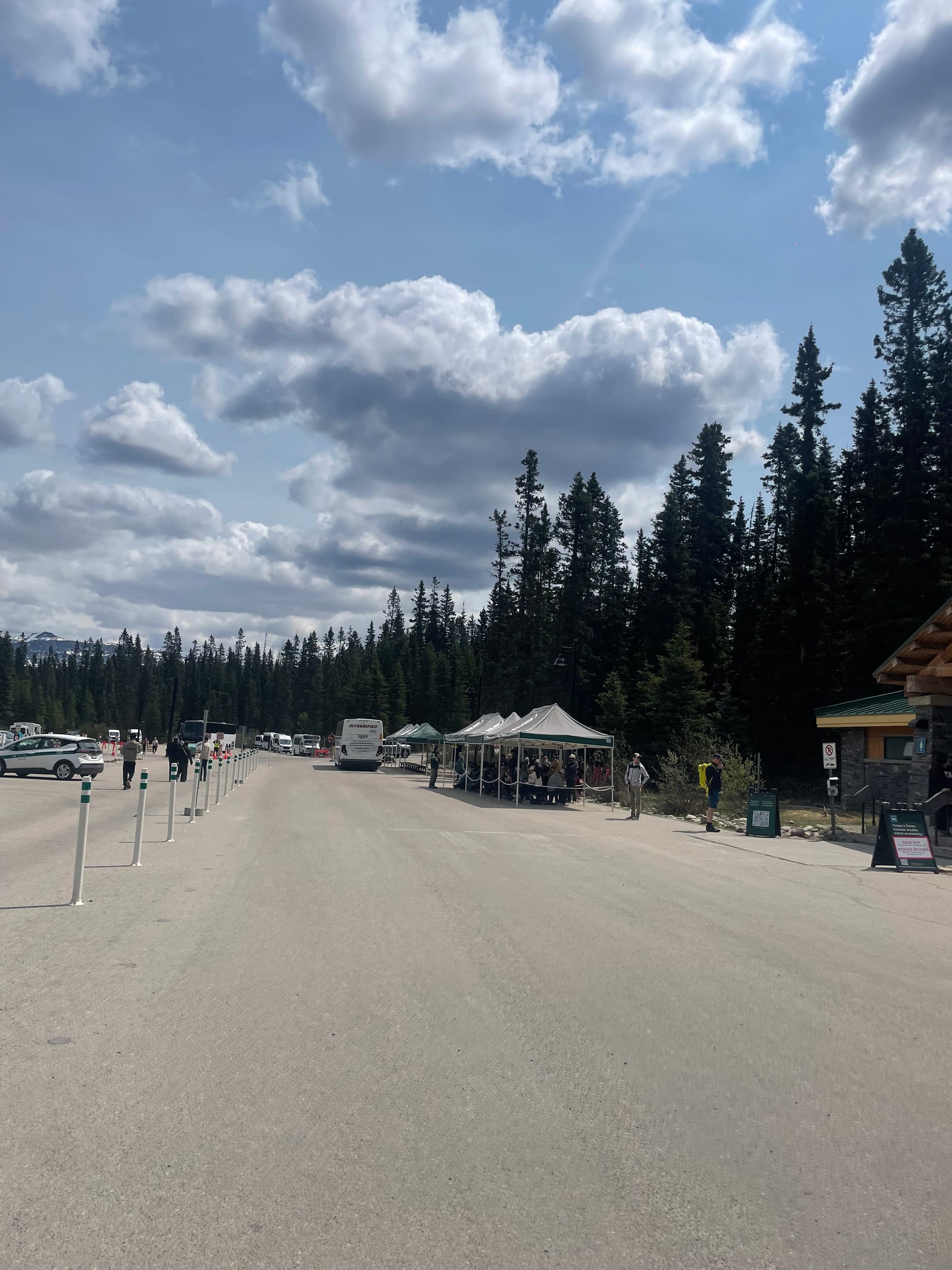
Design carrying capacity increased. Buses were supposed to help overcrowding, but they have made it worse. They solved the car overcrowding & traffic jams to a degree, but in turn made the sites themselves crowded because buses can drop off way more people then turn around to get more —way more than cars ever could.
Moraine Lake
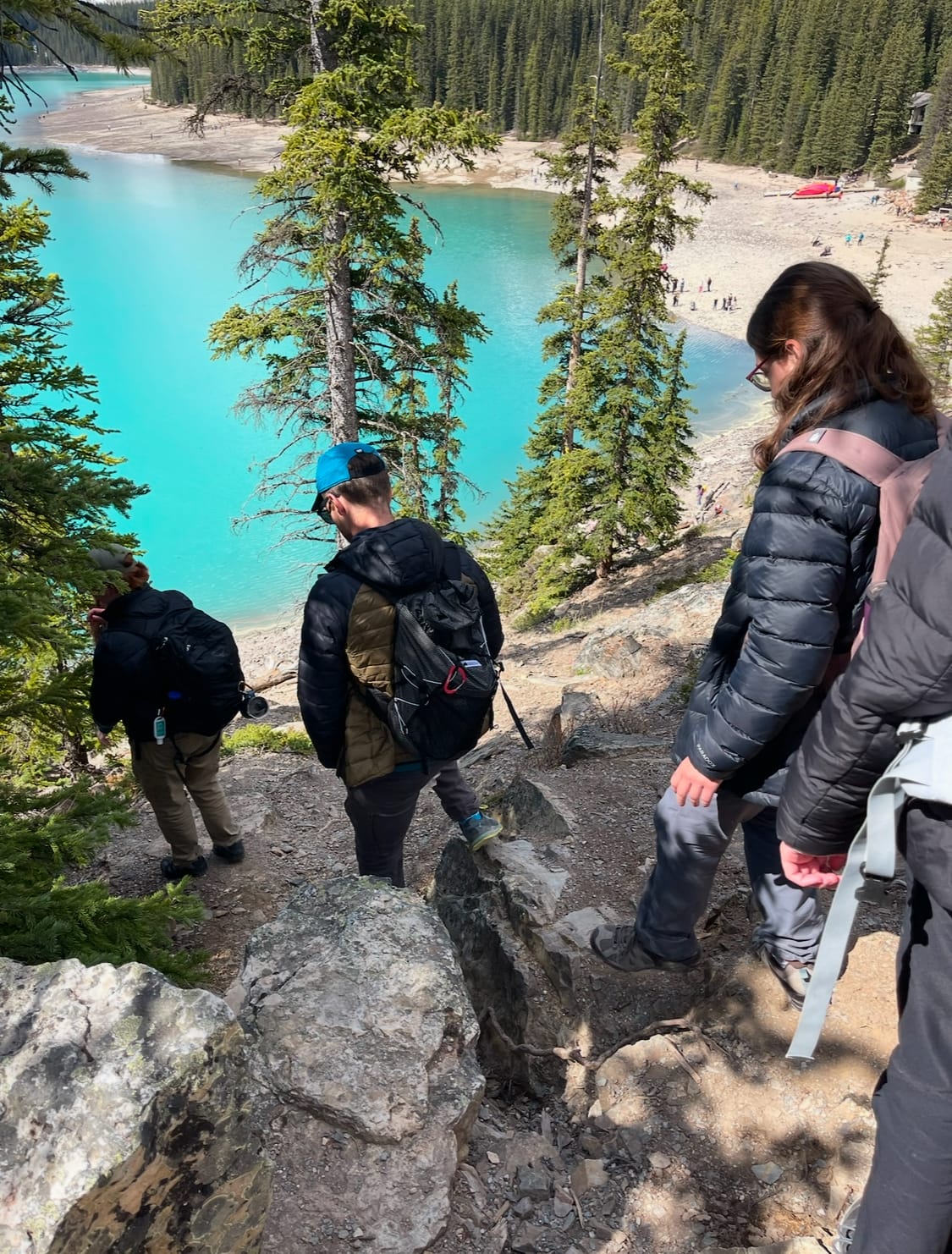
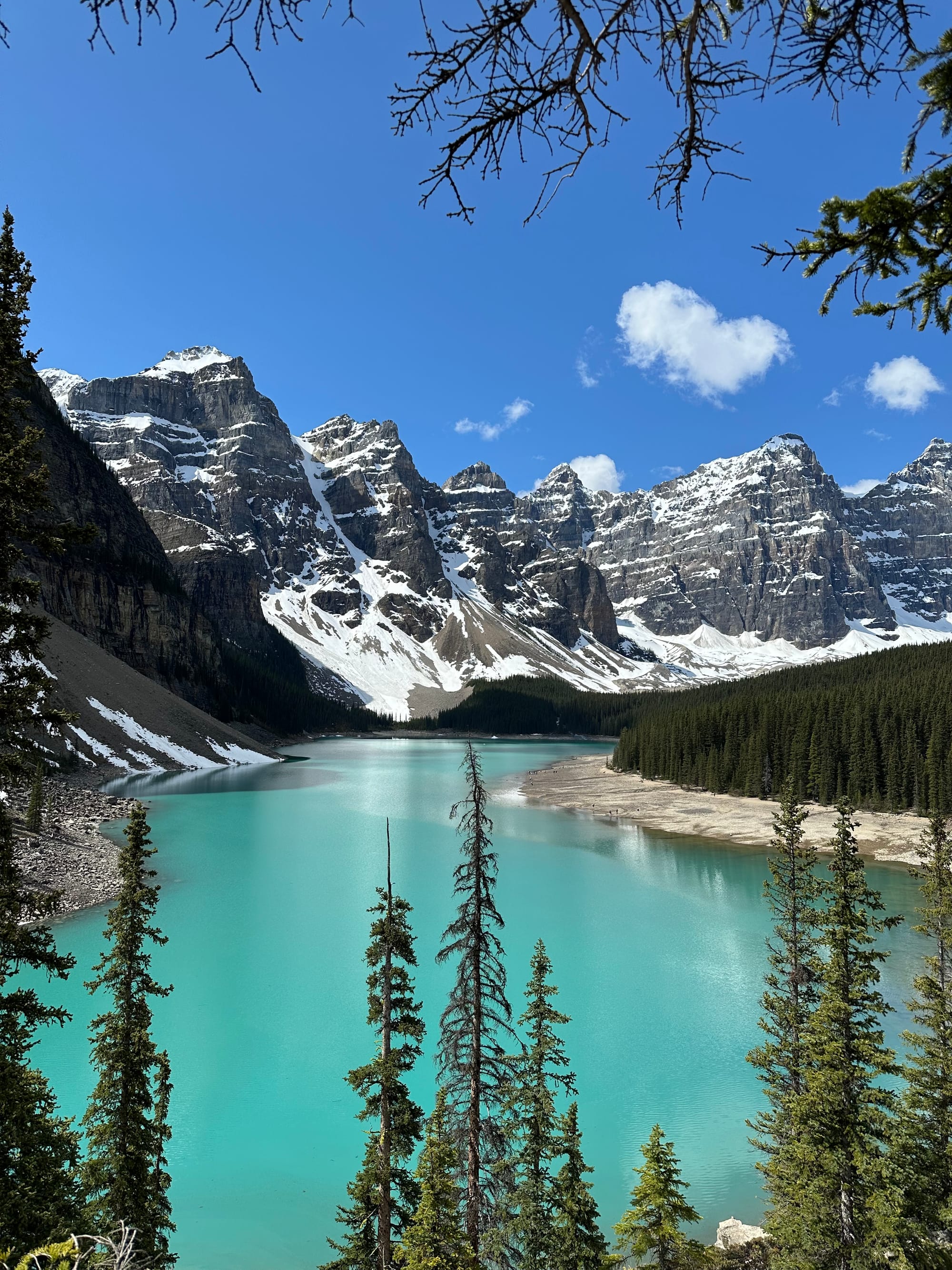

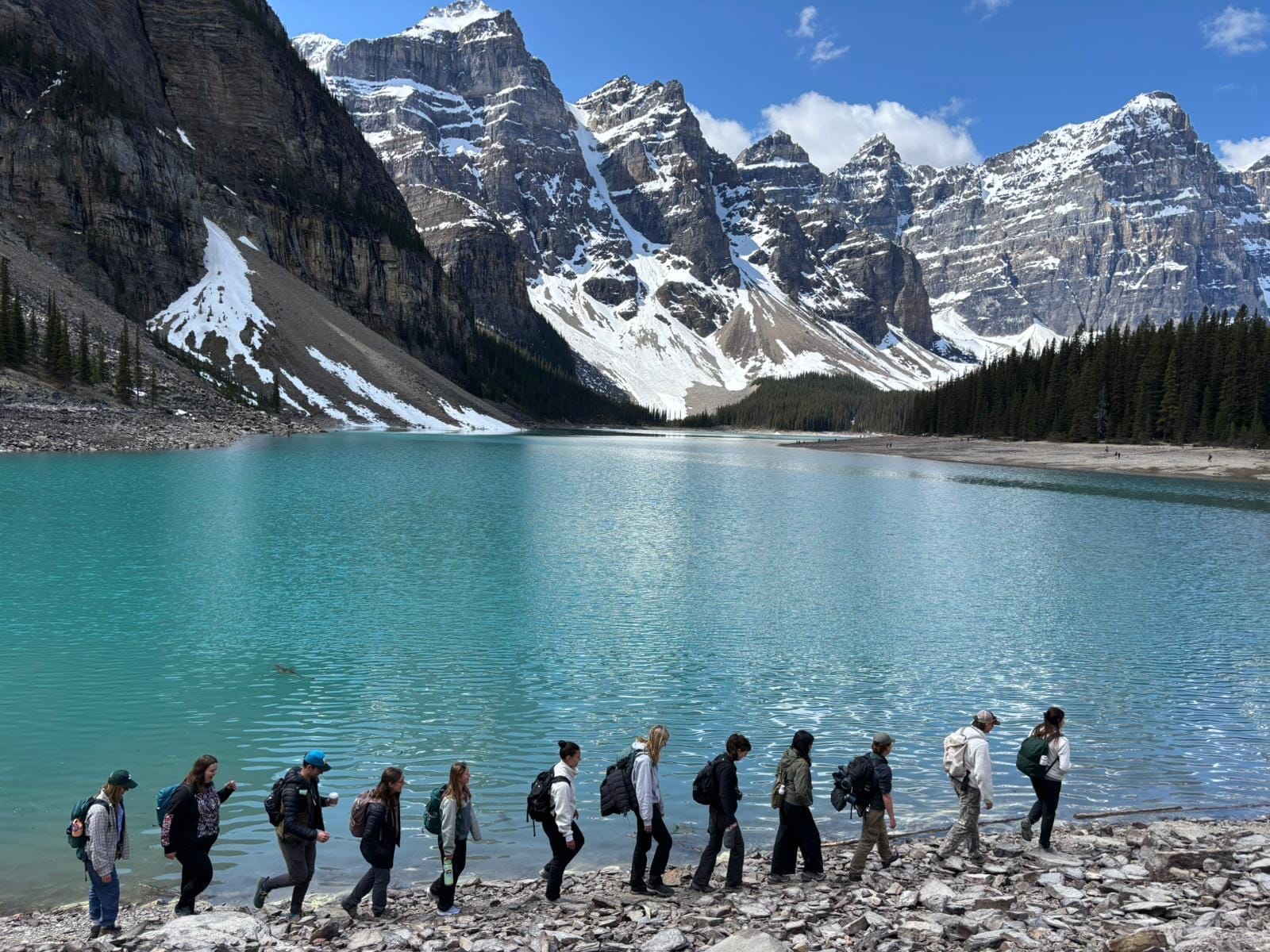
Lots of overcrowding at Moriane because of the buses/shuttles but not as much as Lake Louise.
Lake Louise
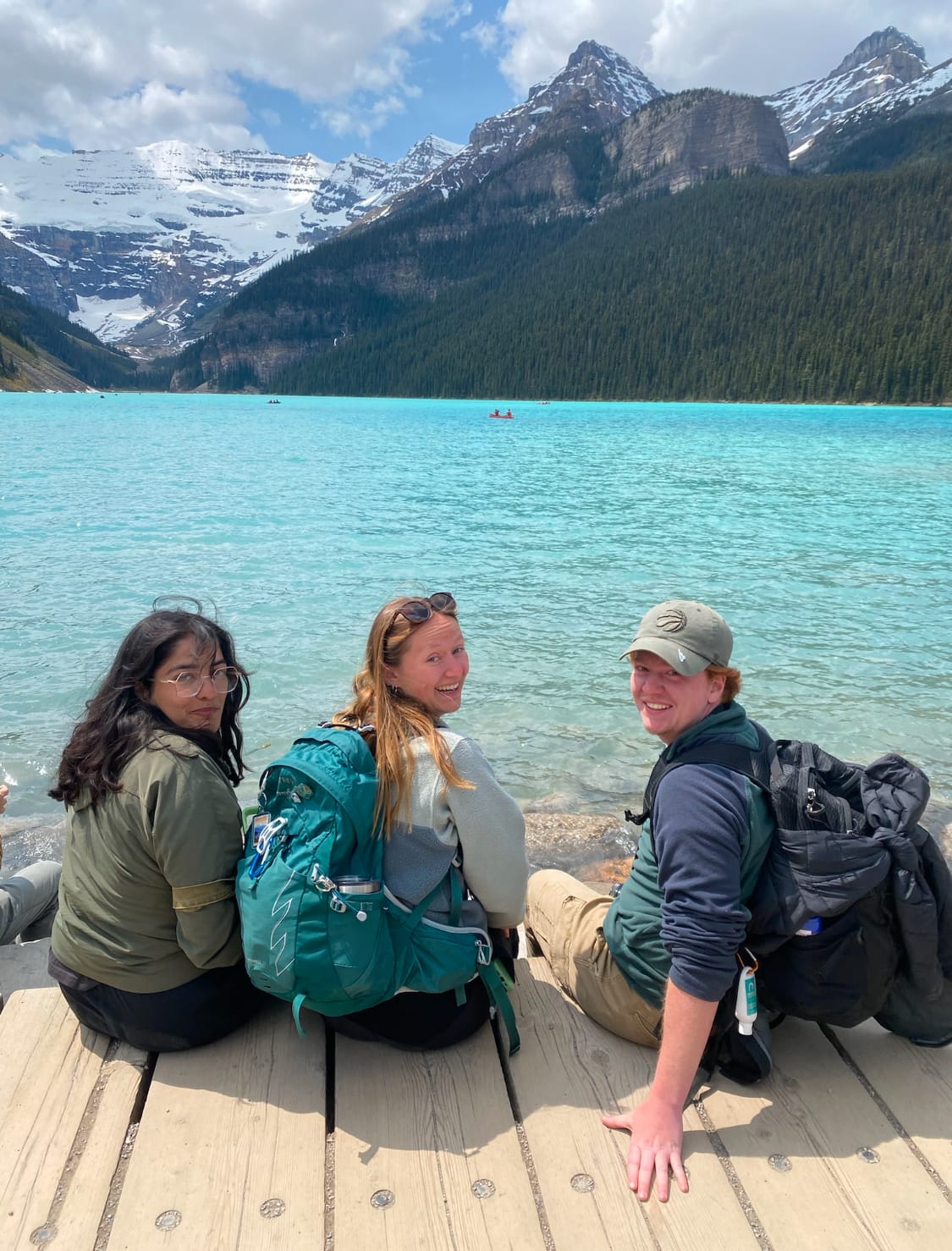
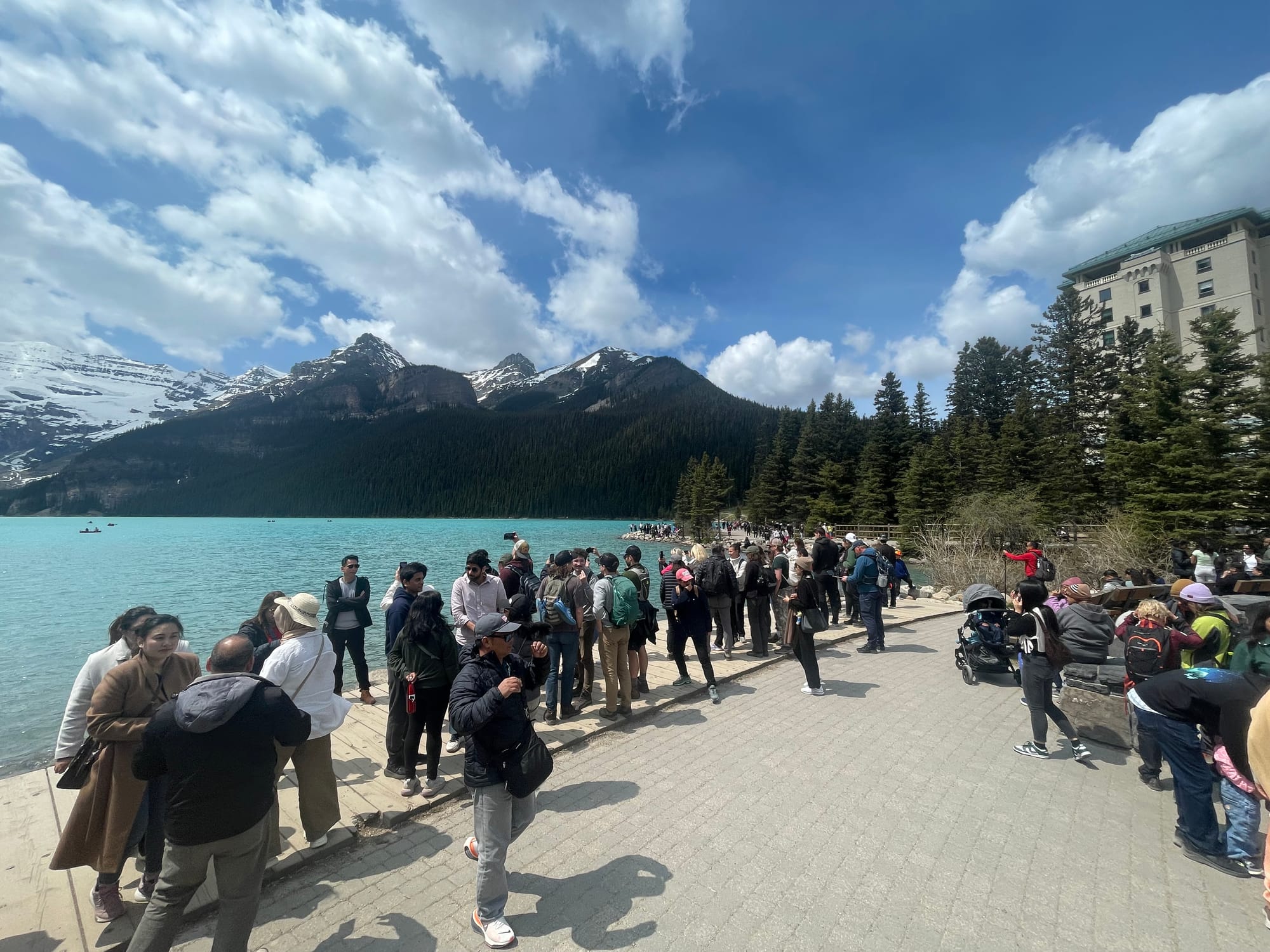
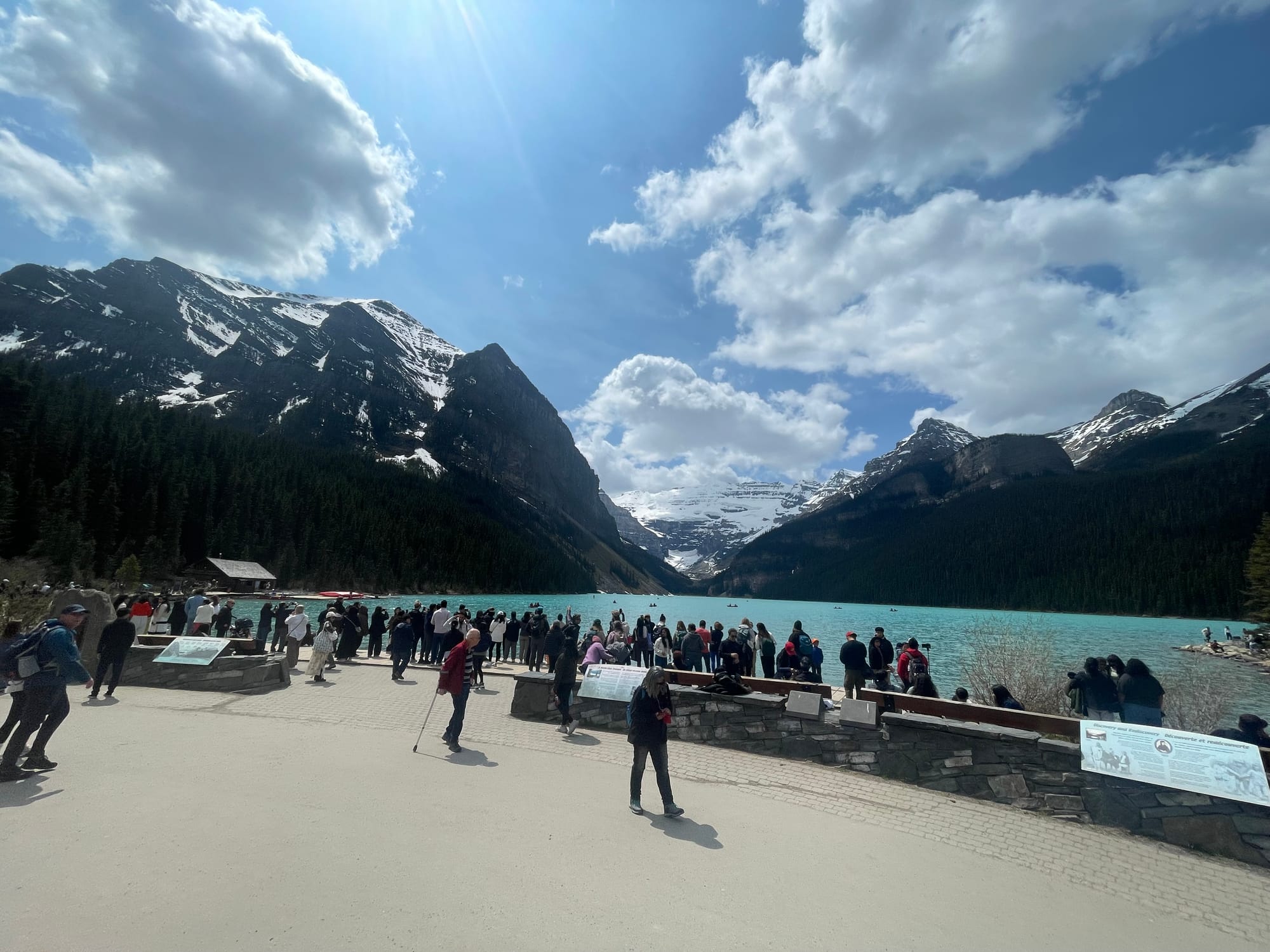
Overcrowding pictures of the main view/picture point at Lake Louise. I was here at 6am ish last summer to do the hikes around the Lake & it was busy even then, people had their cameras set up at the centre point to catch a time-lapse of the sunrise. Overcrowding because of hikers from Lake Louise town, the Fairmont guests, shuttles/bus's, roam transit, & the huge parking lot they have in the back for cars. Lake Louise crowding is worser than Moraine Lake.
Spiral Tunnels
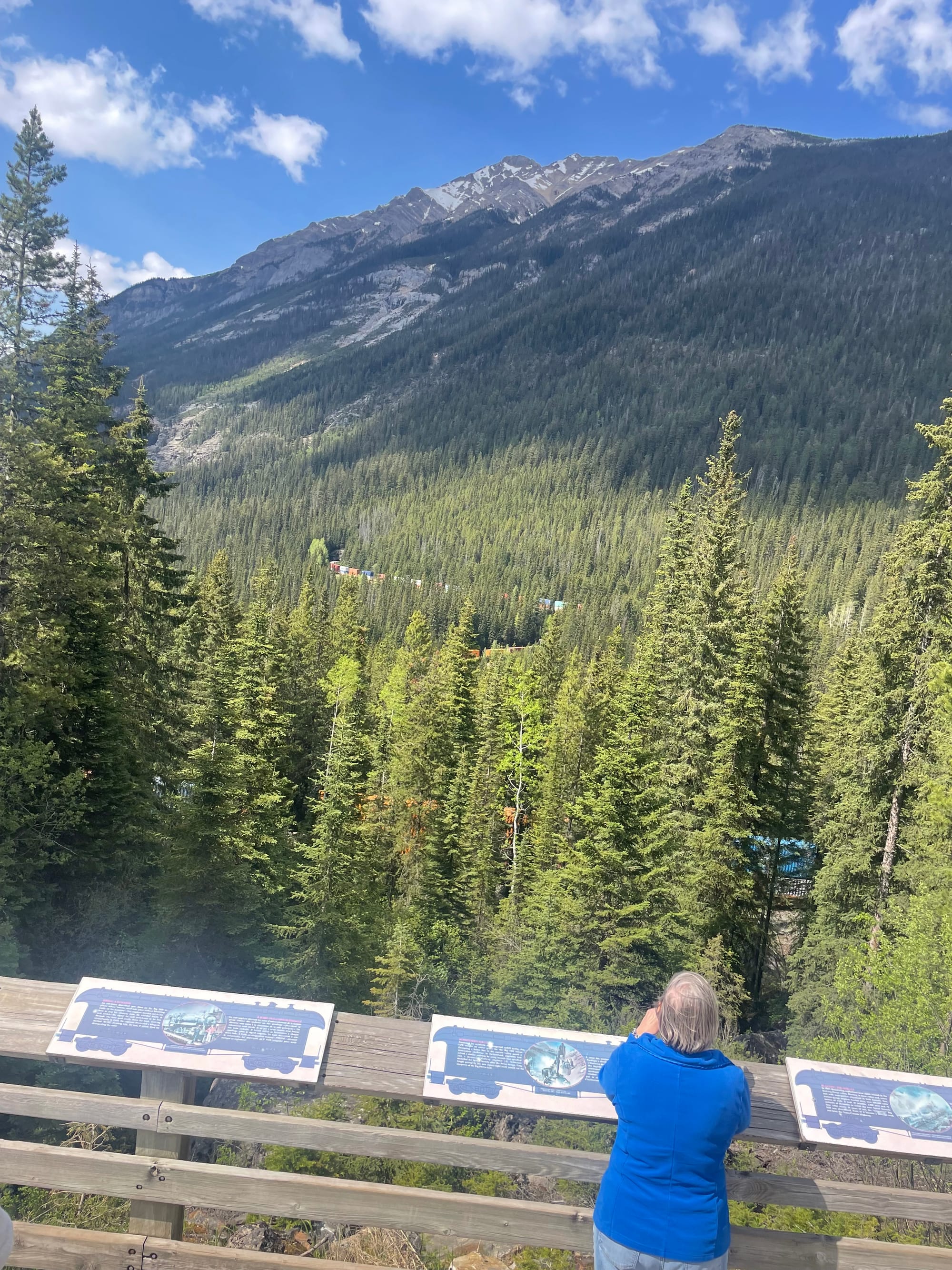
June 3 - Tuesday
Research 🐿️ 1-4pm
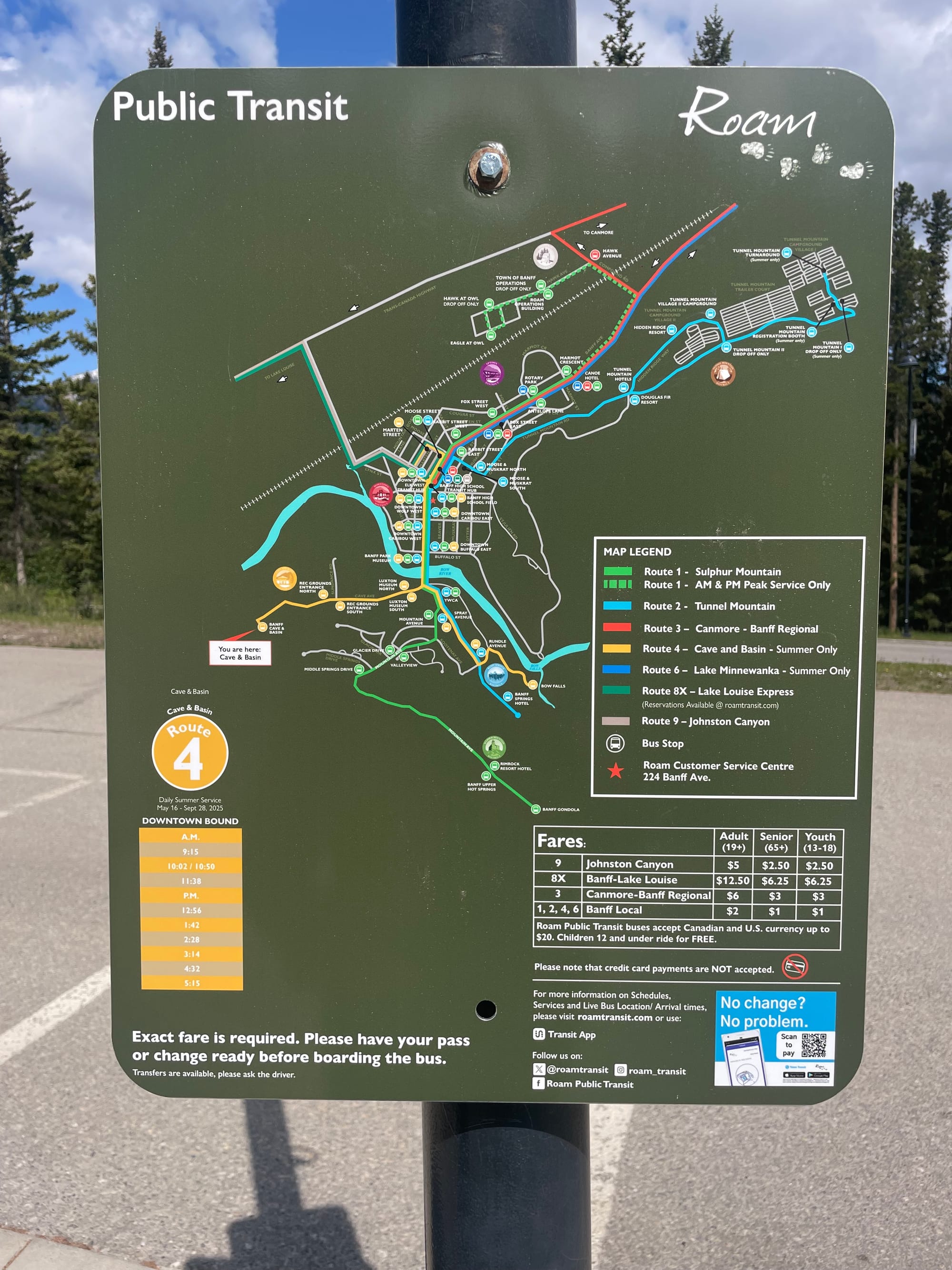
Some community things I admire about the way Banff is designed is the Woonerf (living street) concept being implemented, on Bear St. mainly. Like no curbs, no lane-separation & a not-so-strait road littered with obstacles to make cars question if they should come on that street - making pedestrians comfortable enough to exercise their right of way.
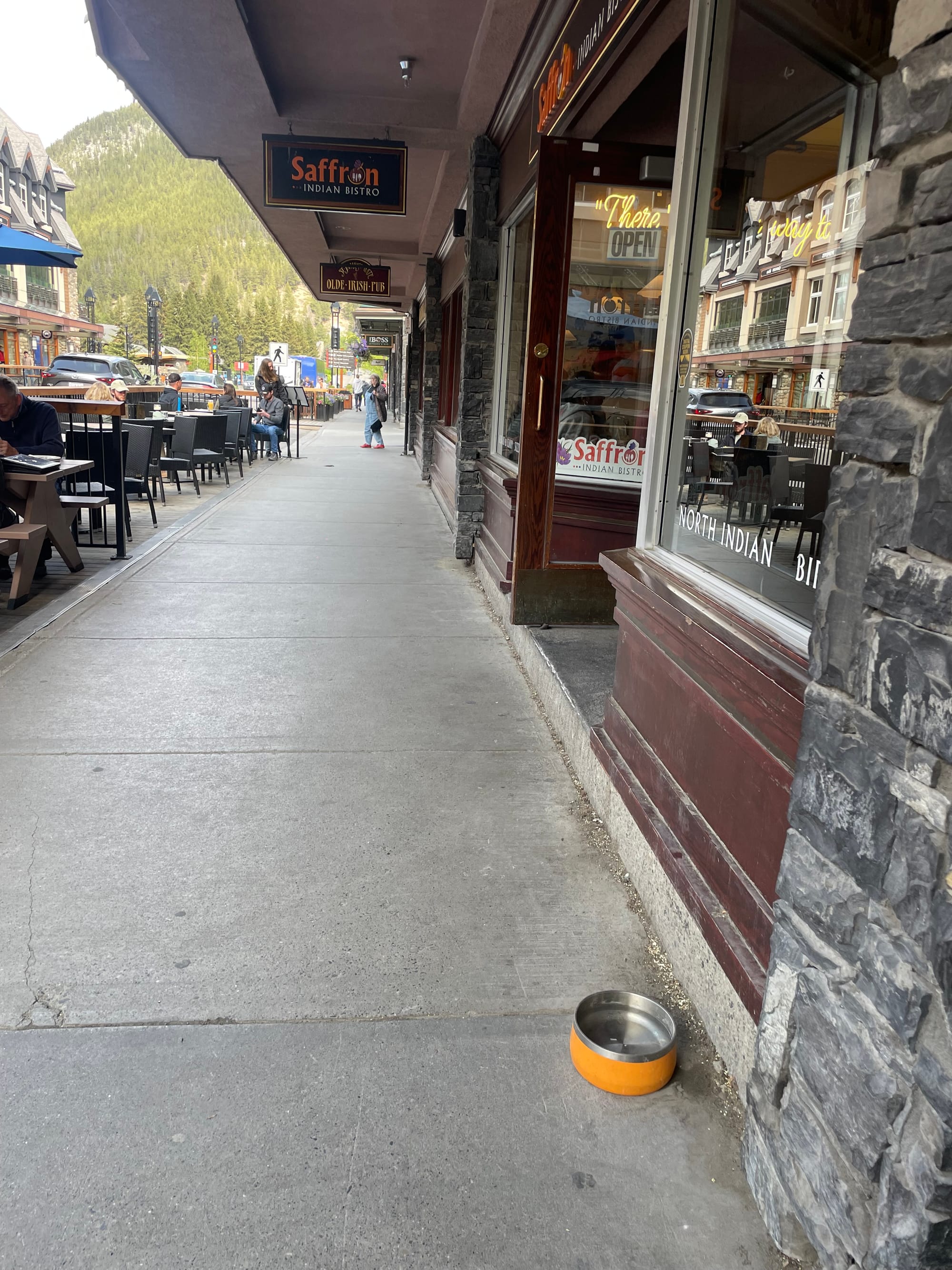
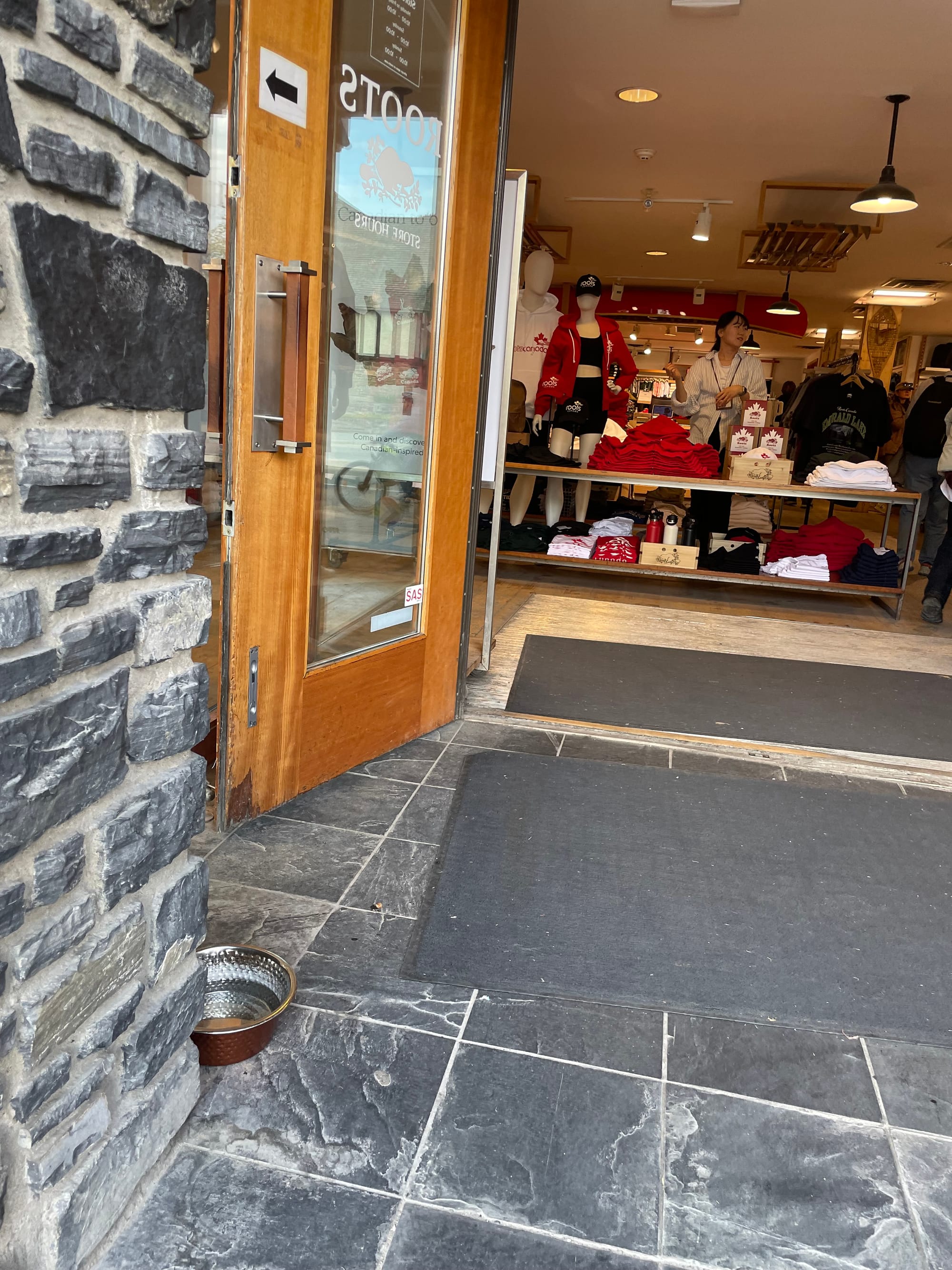

Plus, little things like this pictures, businesses leaving drinking bowls for dogs & birds. Also, the way restaurants have their menus posted outside on a stand or on their window. Affirming the foot traffic they receive & the walkability they promote.



Or open building designs allowing weather & wildlife to come in.
Cocktails at the Fairmont
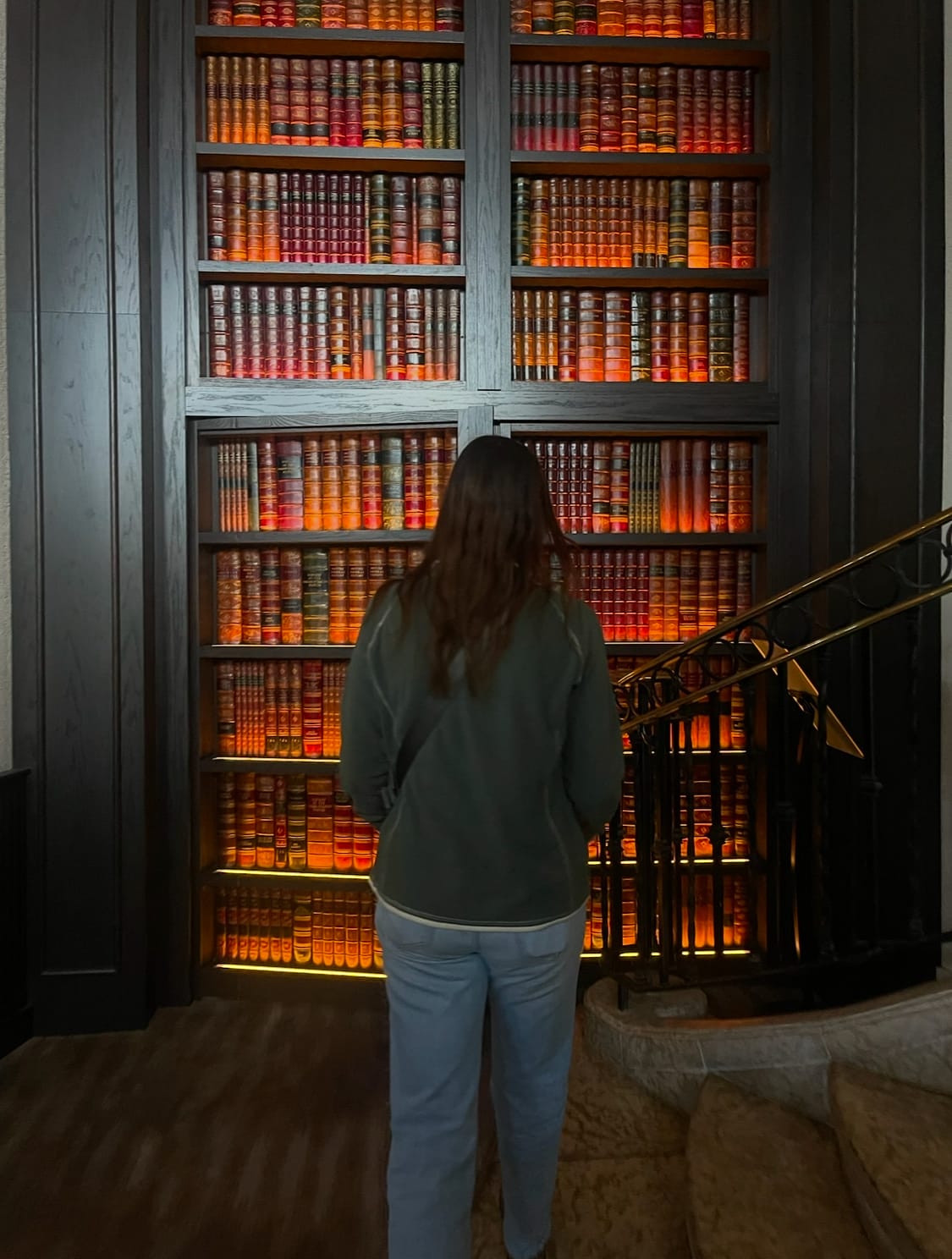
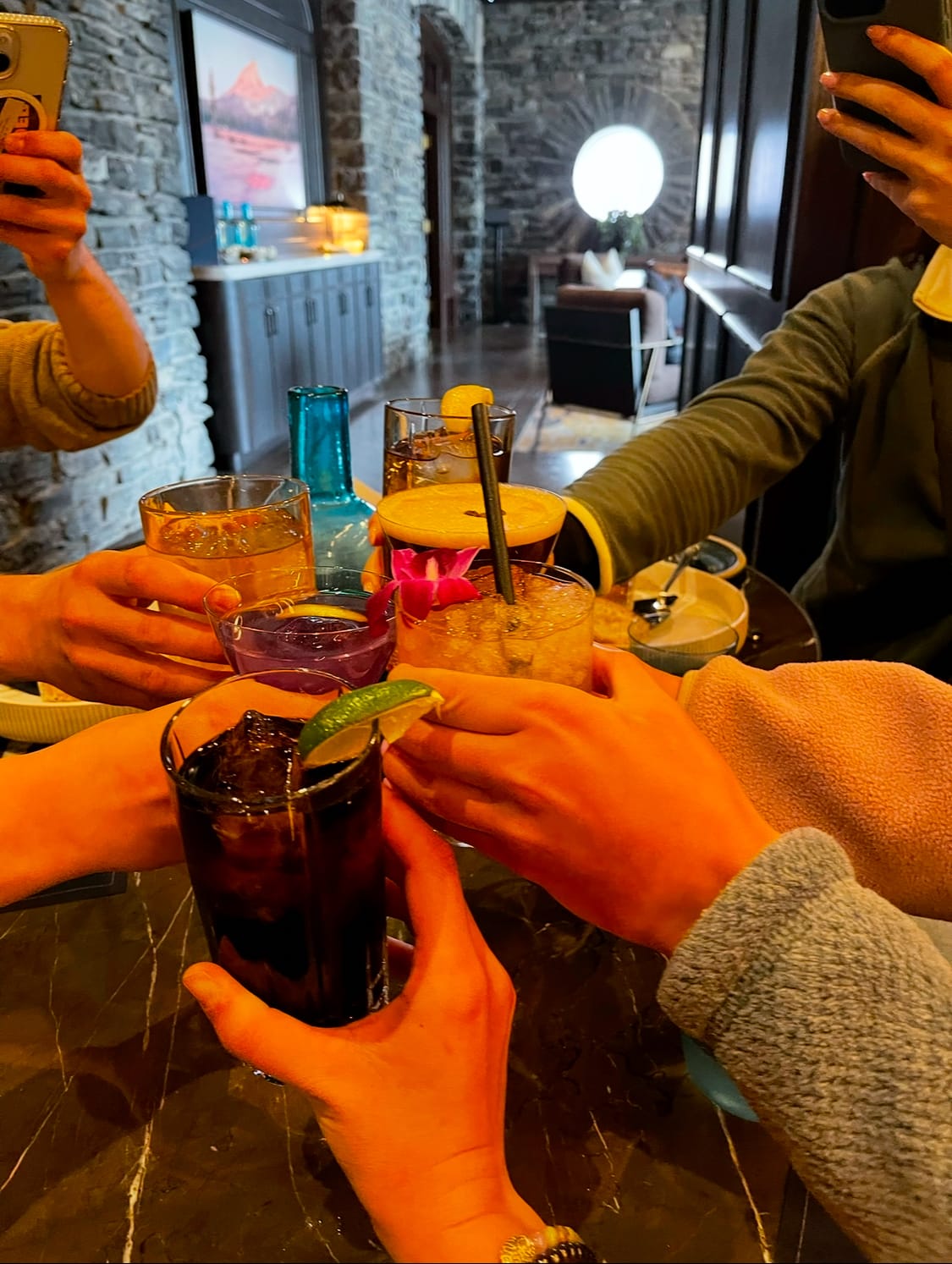
It was nice that even if you’re not a guest at the Fairmont you could dine at the Rundle Bar, & get the same experience as the guests.
June 4 - Wednesday
Cave & Basin guided by Dr. Dwayne Lepitski — "Good communicative integrity is not good ecological integrity."

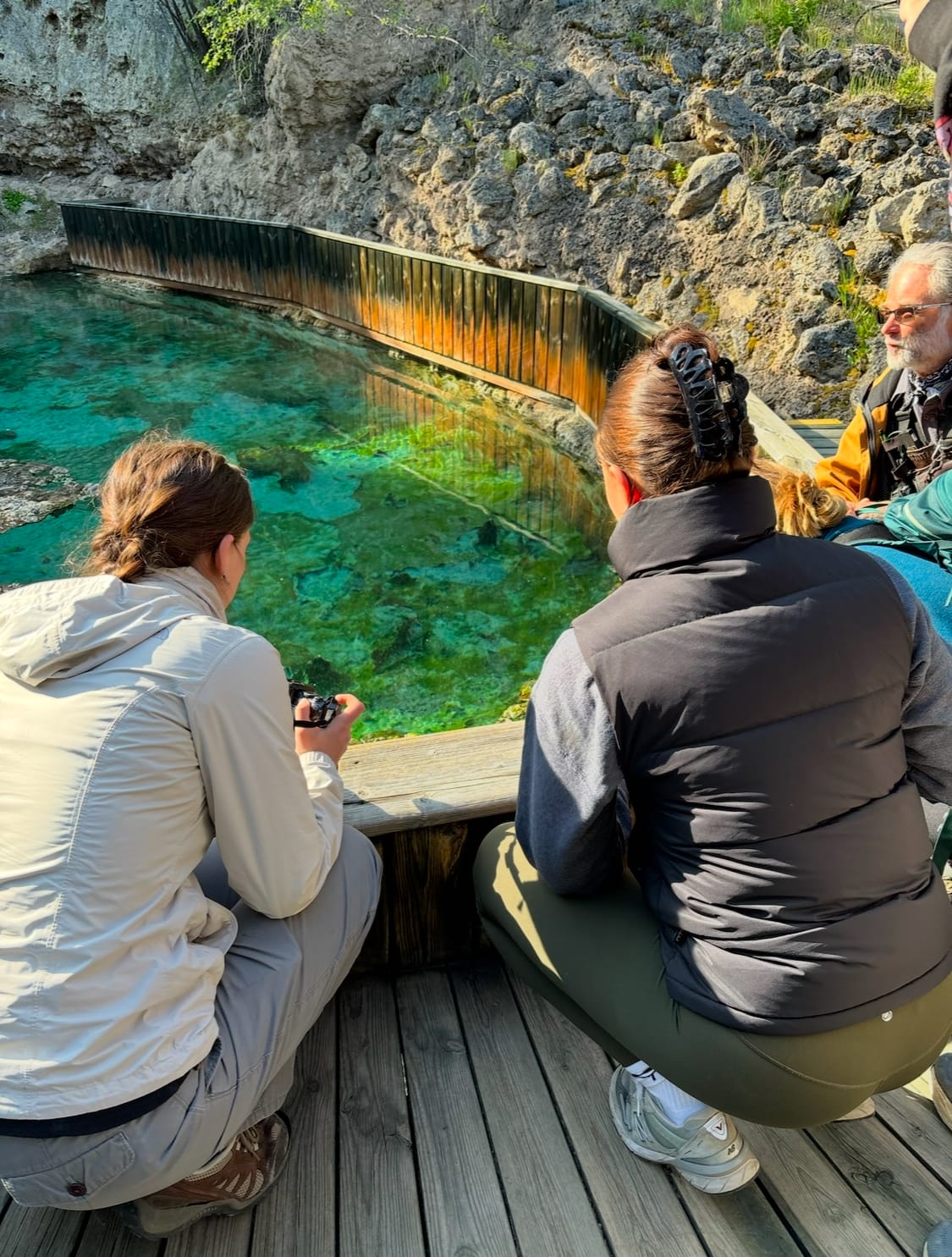
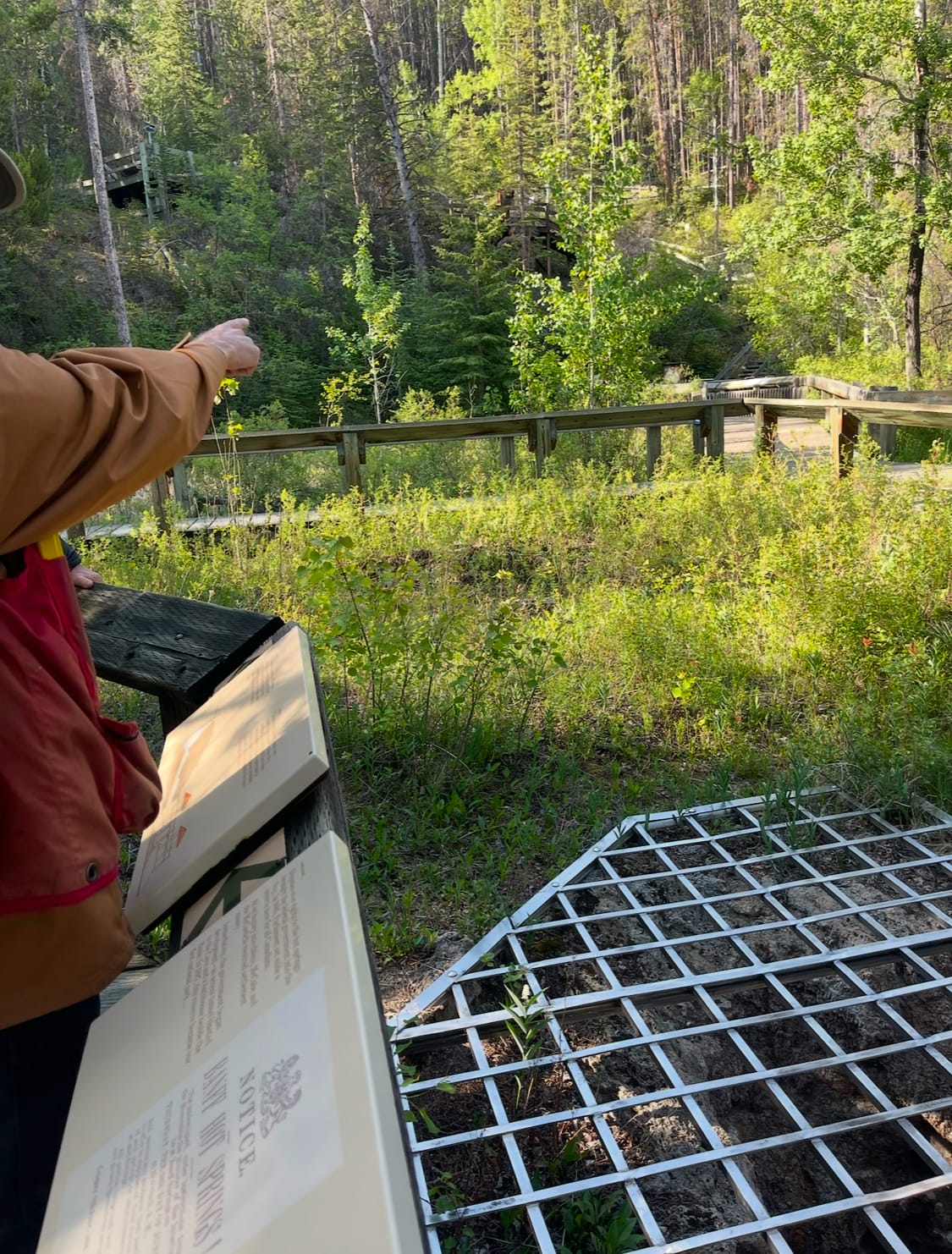
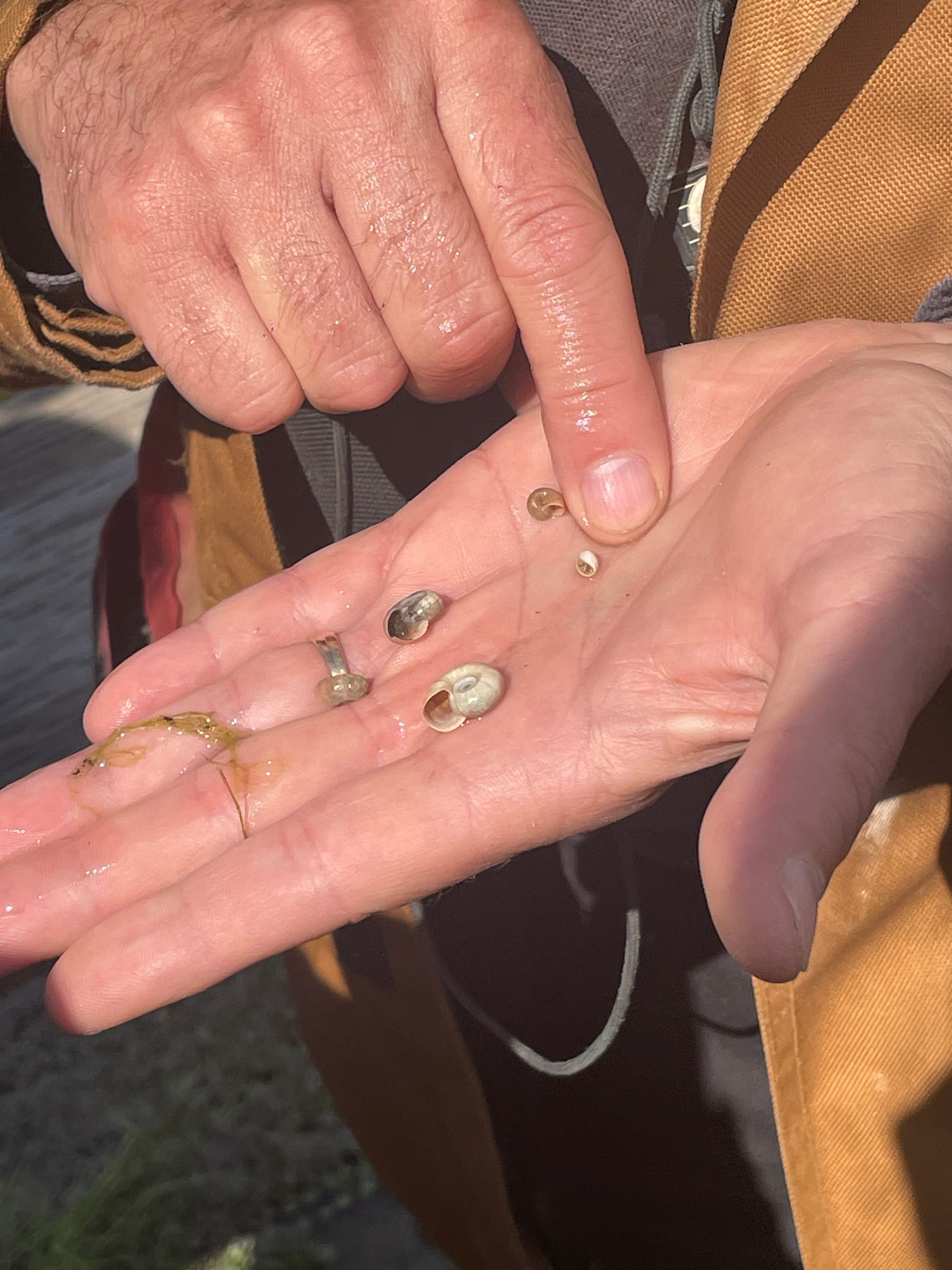
We learned about the importance of biodiversity & the dire impacts on species human overcrowding can have, once that 'spot' has attained fame/lore around it. It was intriguing learning about the incidents at the Cave & Basins, about how delicate the snails are, & the penalties of breaking the law there. To see someone dedicate their entire career to a places & species was admirable.
Farmers Market - It was cool to start noticing more & more locals in Banff by this time in the trip.
Library - We visited the library in the middle of Banff to making the presentation portion of the final report. It was intriguing how we were in the middle of town but could escape to a place to get work done. It made it feel more like a town over a tourist hub.
June 5 - Thursday
Kootenay
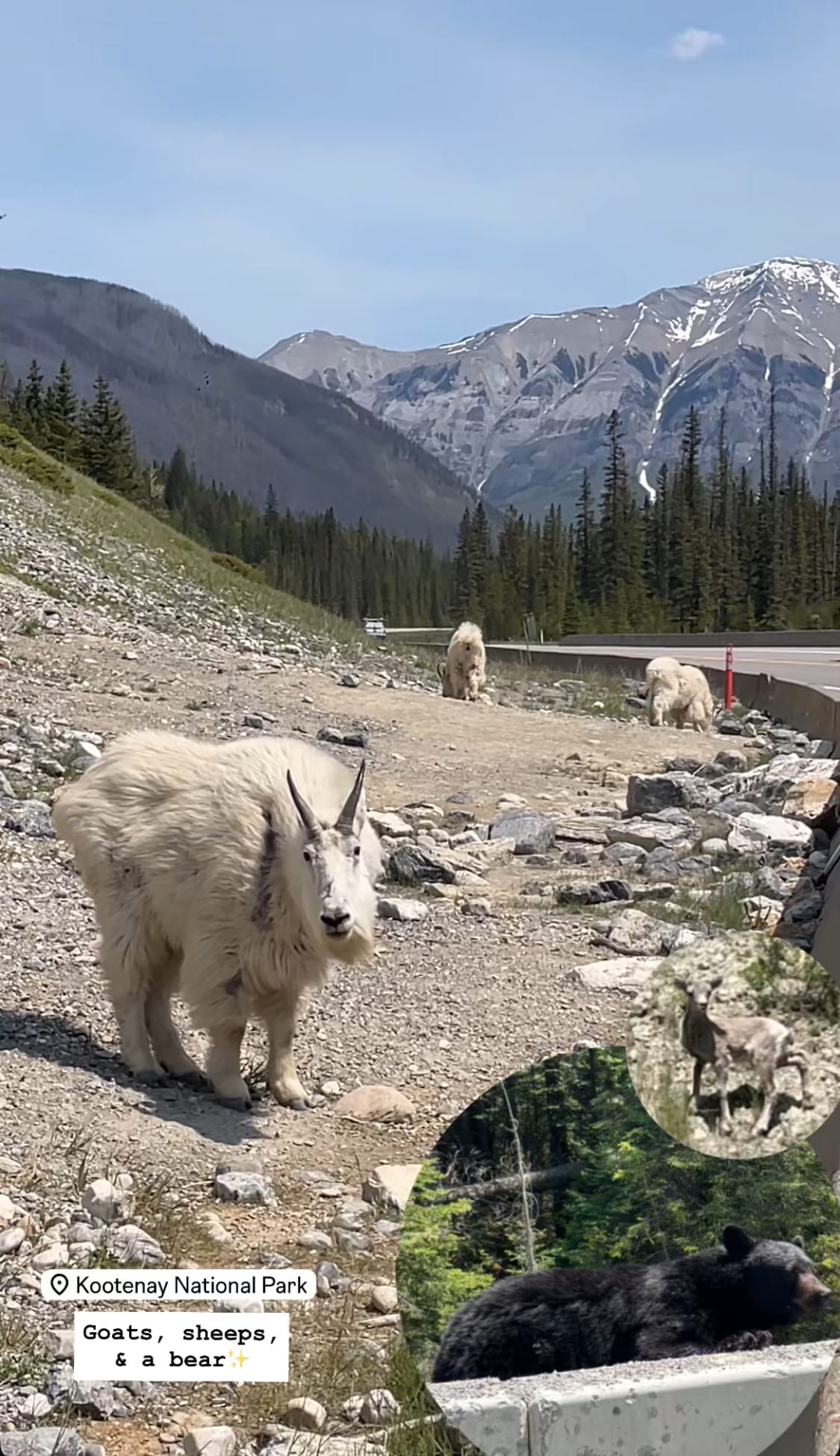
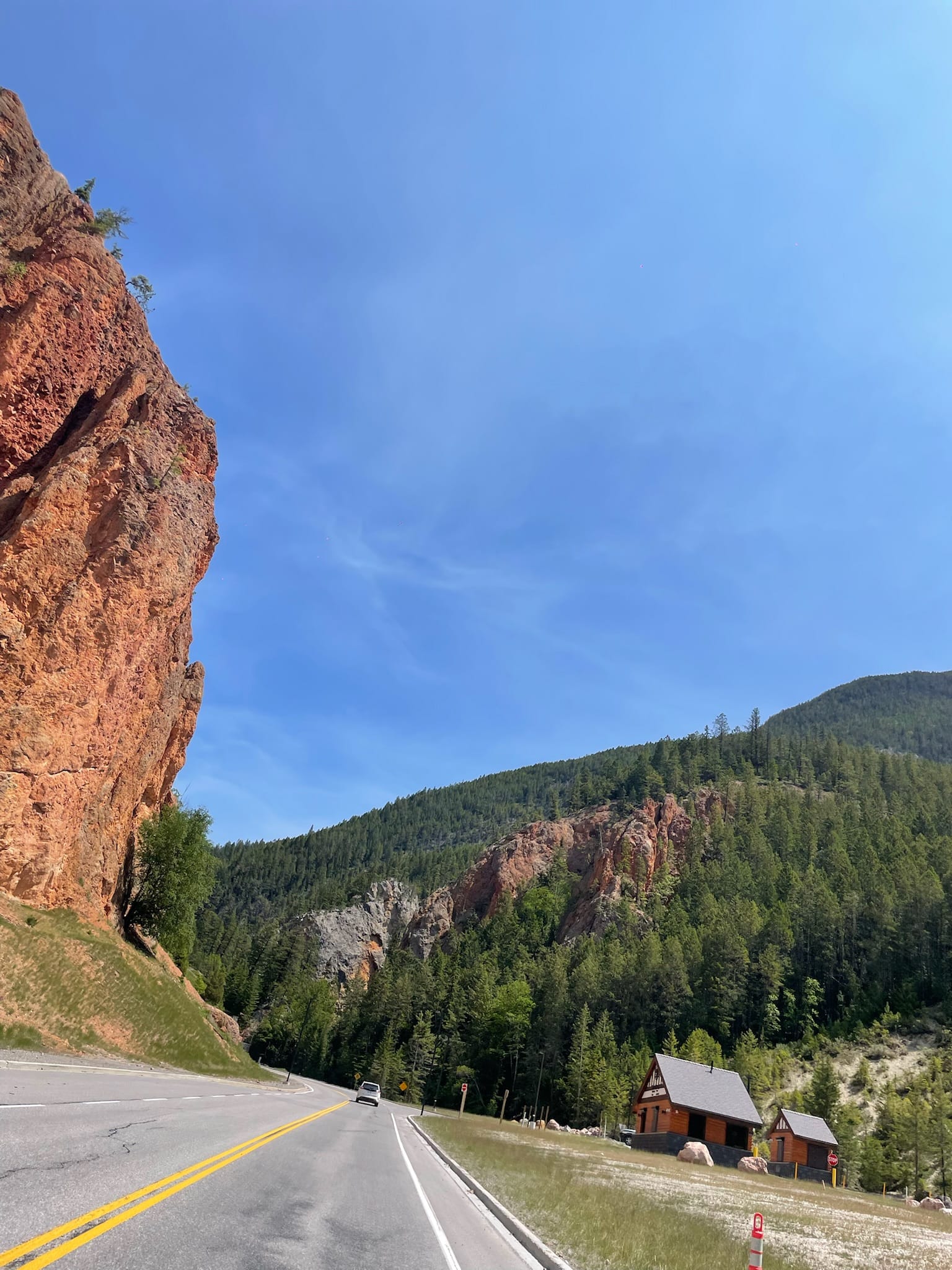
From our Tunnel Mountain 2 we drove down to Radium Hot Springs where made U-turn. As we approached the springs we got to see Goats, Sheeps, & a Black Bear at the side of the highway. They seemed weary of cars yet used to the people stopping to take pictures of them up close, the Bear definitely seemed a little stressed trying to cross the highway. I was surprised to see the fencing bordering along the highway abruptly end once we left Banff National Park & entered Kootenay National Park. It made me wonder why it is not implemented in all National Parks yet.
Marble Canyon
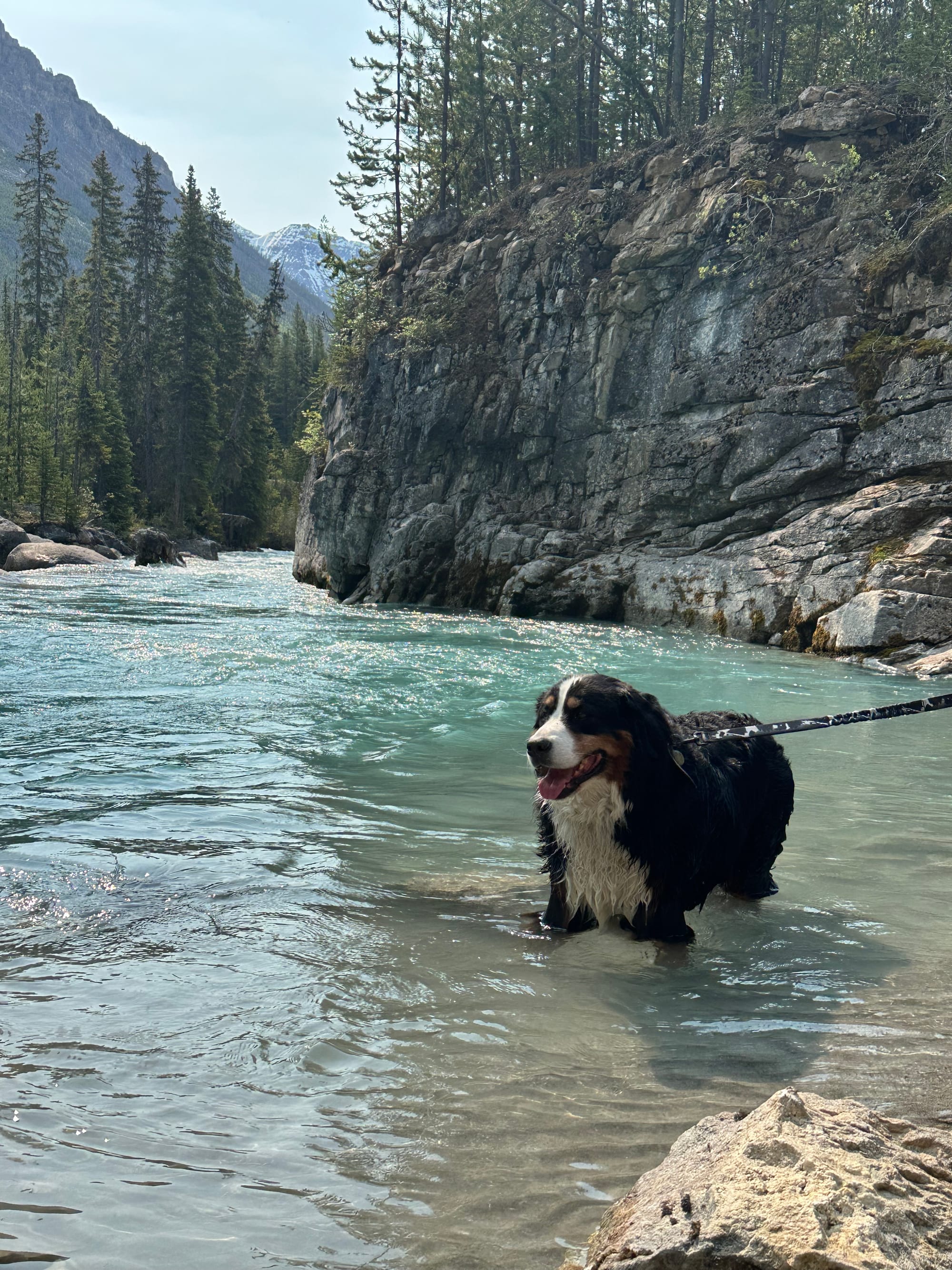
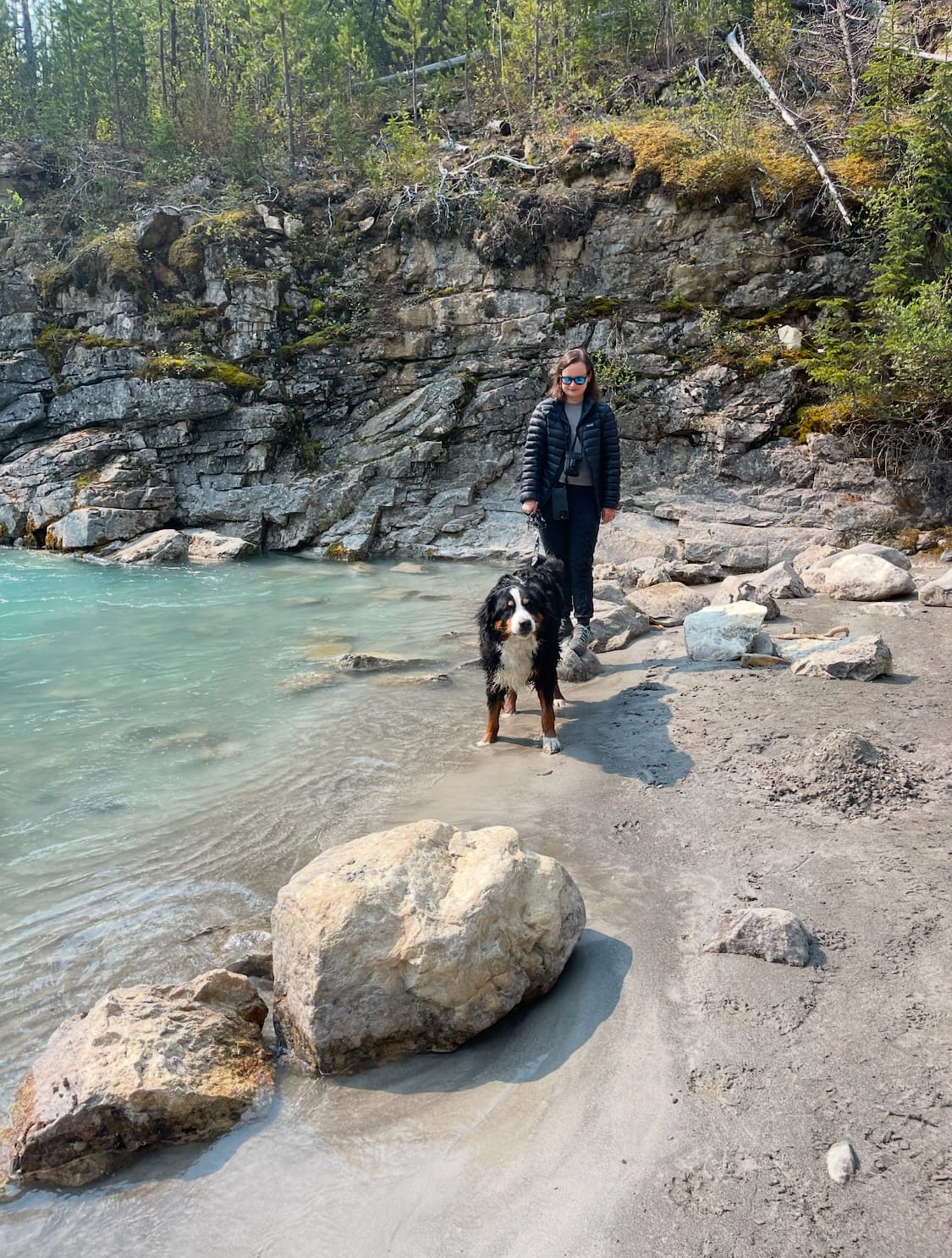
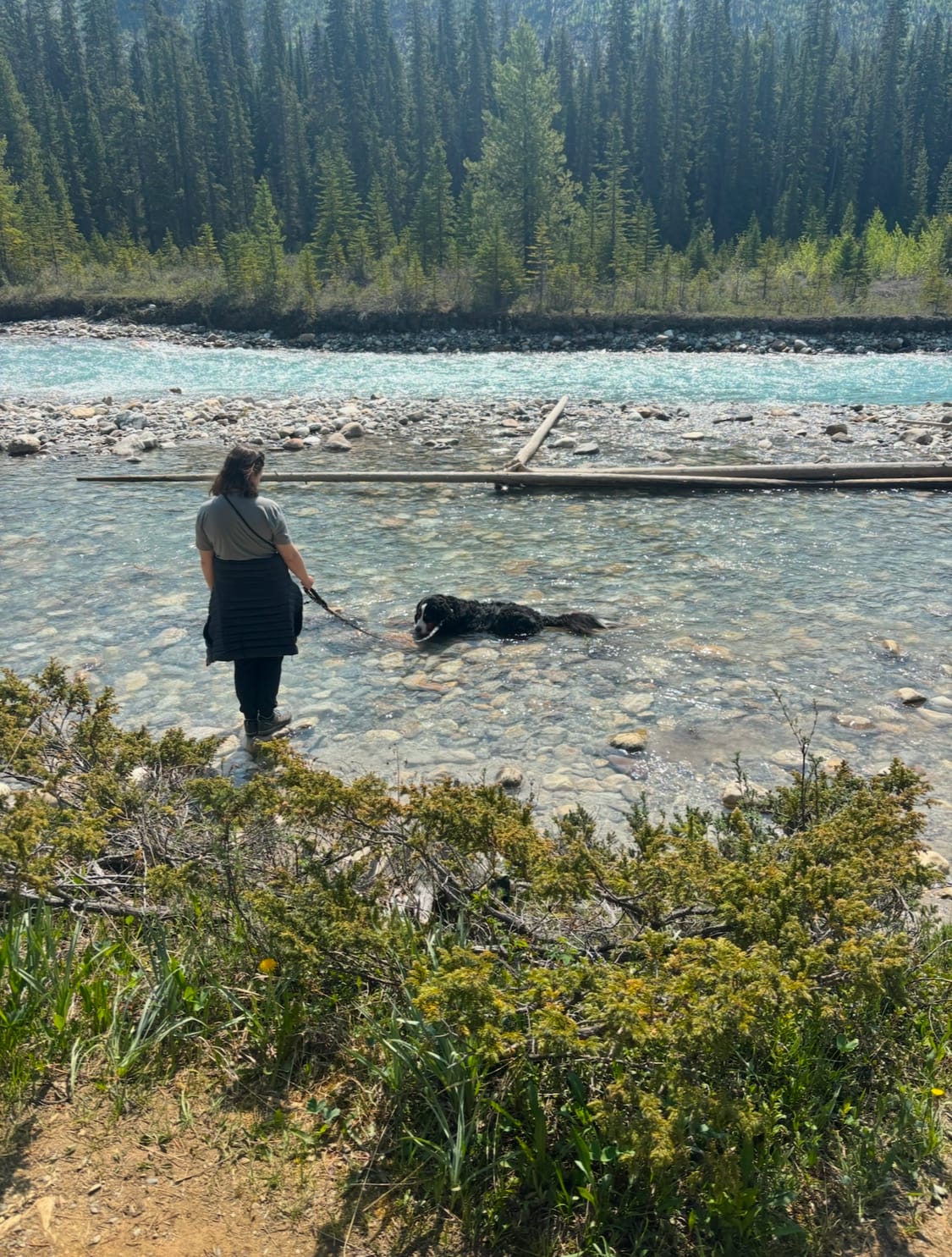
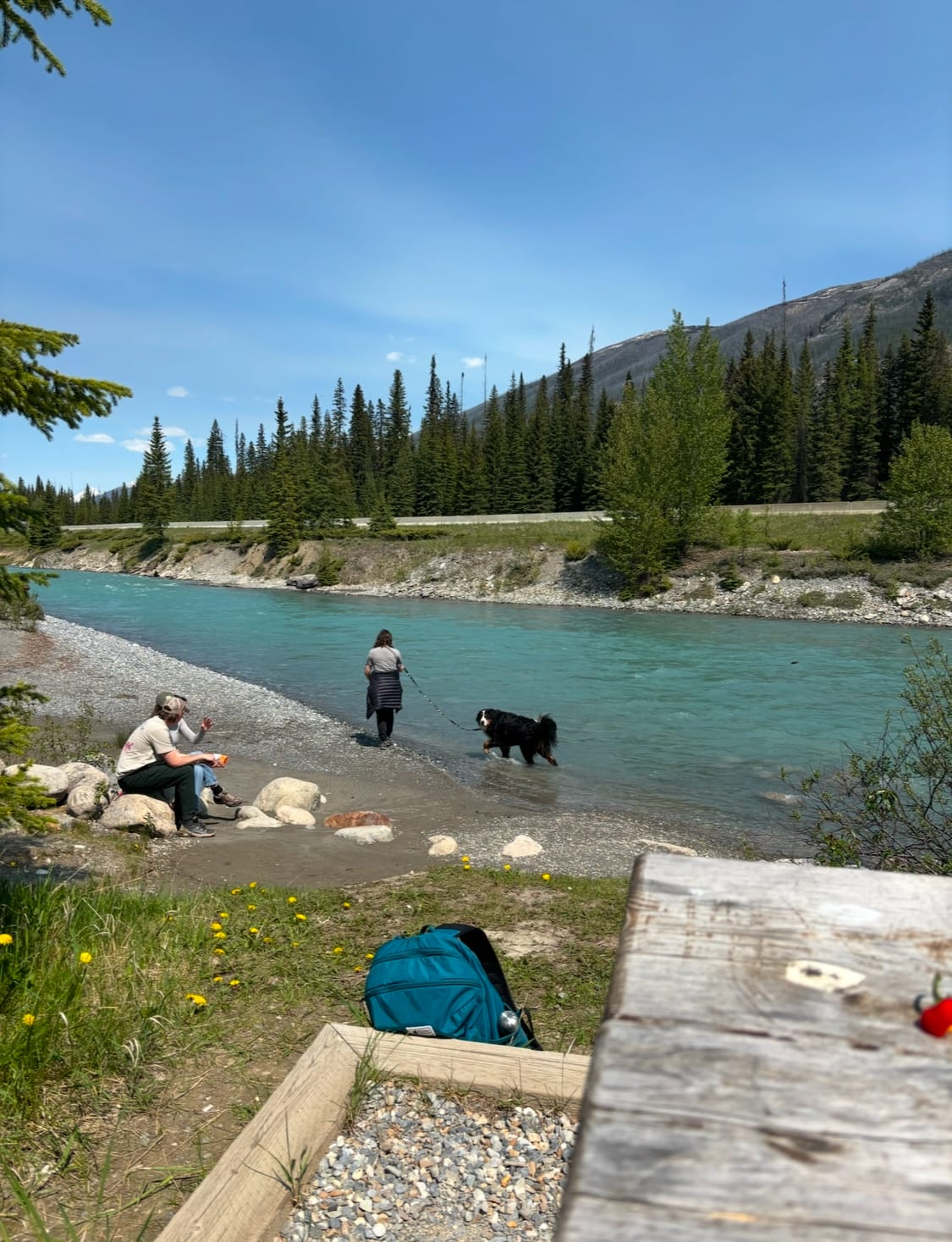
Marble Canyon was a beautiful ecosystem/scenery to witness, seeing the power of water erosion over time in one place —walking over it.
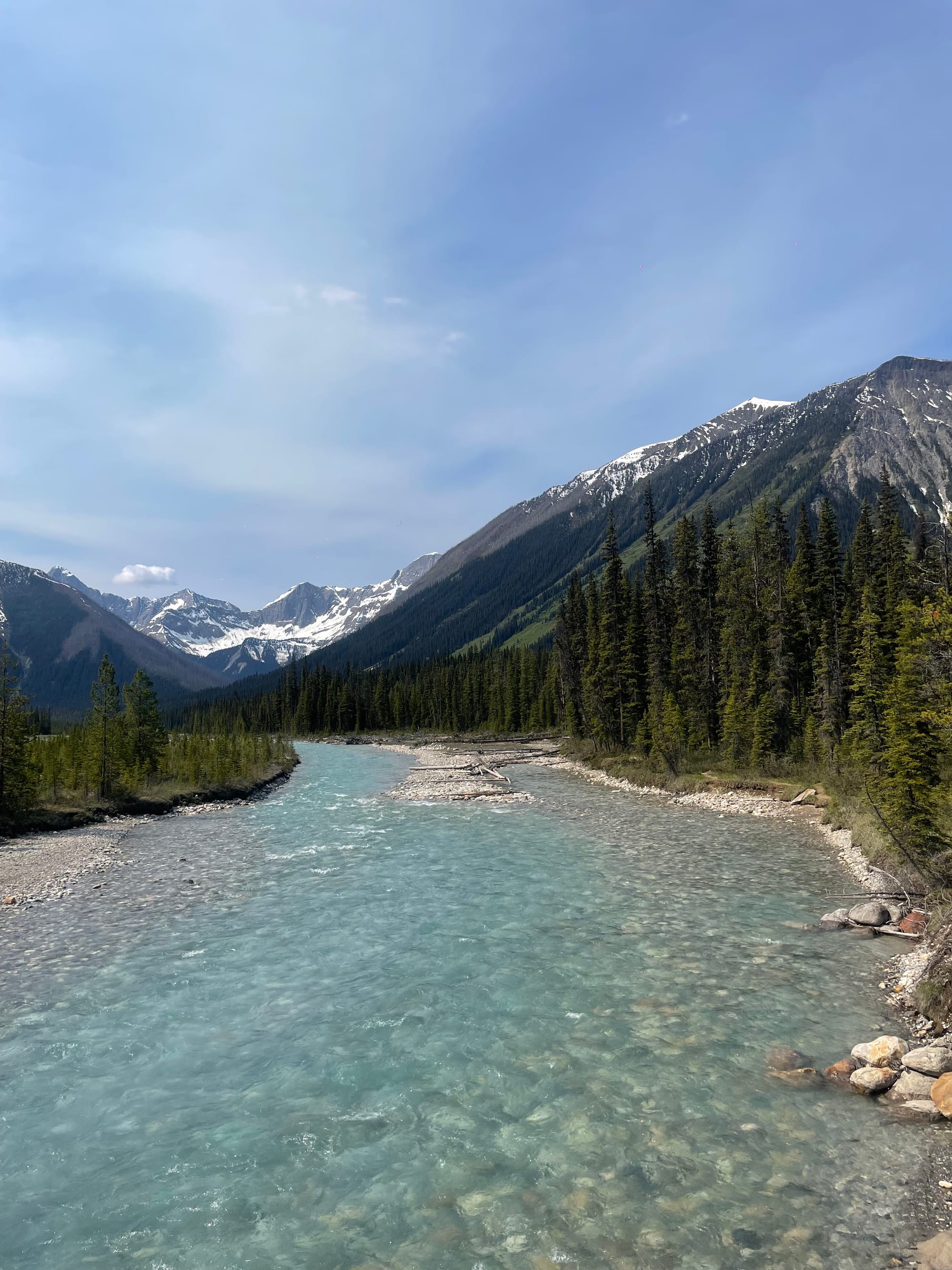
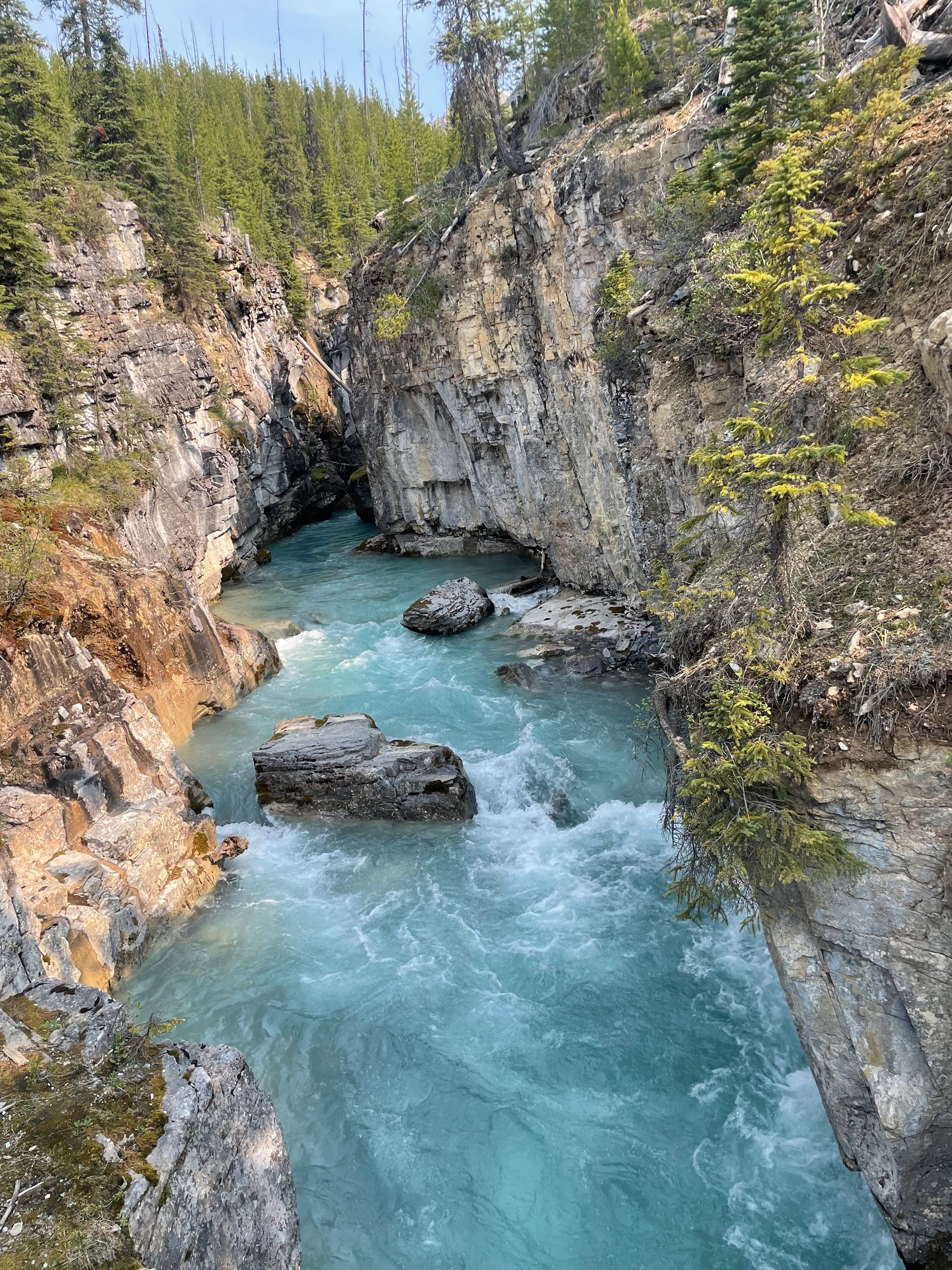
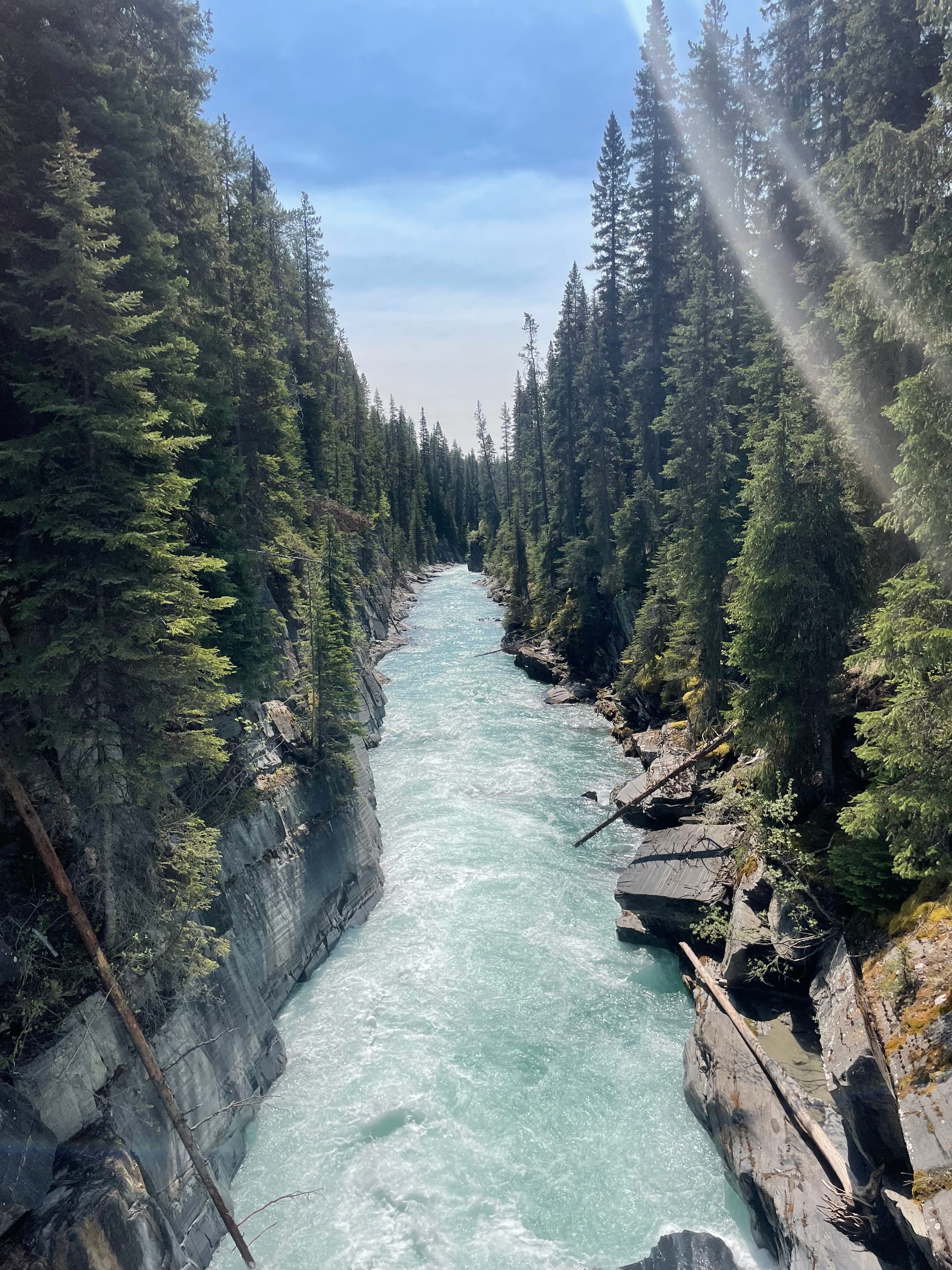
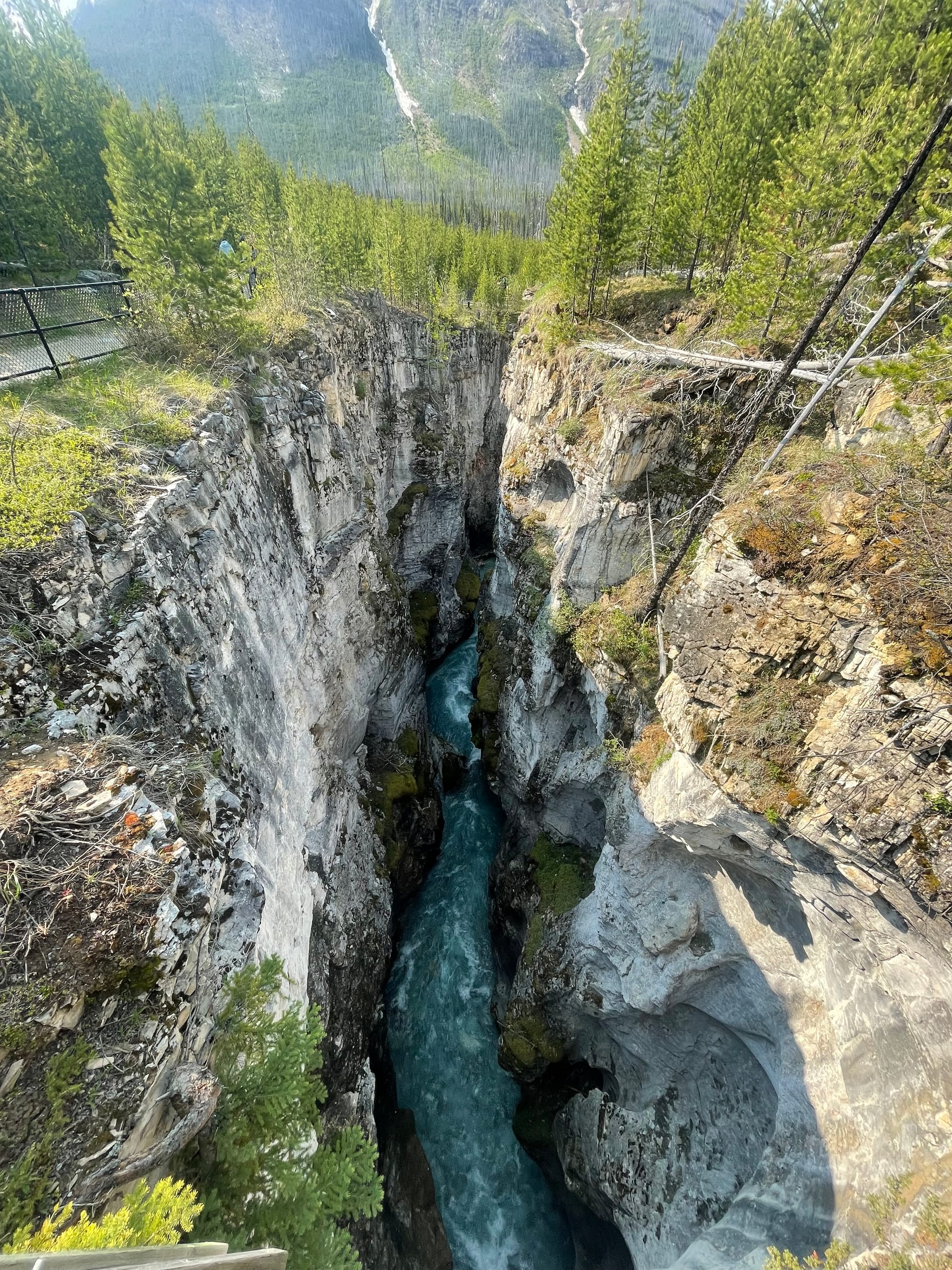
Paint pots
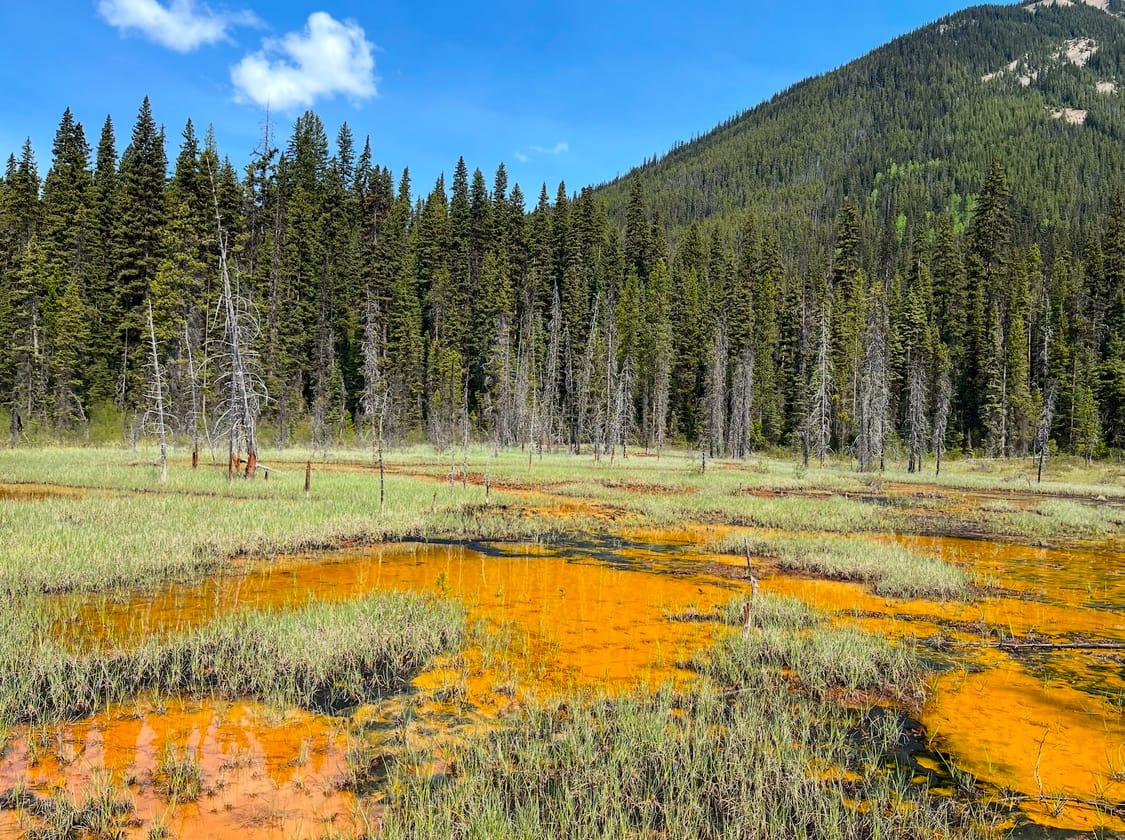

We also briefly visited Numa Falls & Olive Lake. To admire & hike around. I noticed other tourists at the same sites as us driving down this highway & making the same stops as us (Marble Canyon, Paint pots, Numa Falls, & Olive Lake).
June 6 - Friday
Drive home:
Pretty soon after joining highway 1 at 6 am in the morning we reached a complete stop for about 20 minutes because a flat deck semi had all of its load spilled on the road, because it was not strapped in properly. Traffic-jammed with no escape from side dirt roads like Winnipeg's perimeter highway, many other cars were doing the same thing. It was an intriguing experience because we got out of the car, walked, stretched & said hello to the other half of the class in the van in front of us.
Overpasses, underpasses & fenced highways:


It is impressive to see these strategies in play, as you drive down highway 1 for hours upon entering Banff National Park & the fences along the sides of the highway follow you.


The beautiful overpasses in many stages of passing by over you, and the unnoticeable underpasses under you, hidden until someone or an exhibit tells you.
Clayton H. Riddell Faculty of Environment, Earth, and Resources, University of Manitoba
GEOG 4350 - Parks & Protected Areas Planning & Management
Dr. Michael Campbell
Member discussion